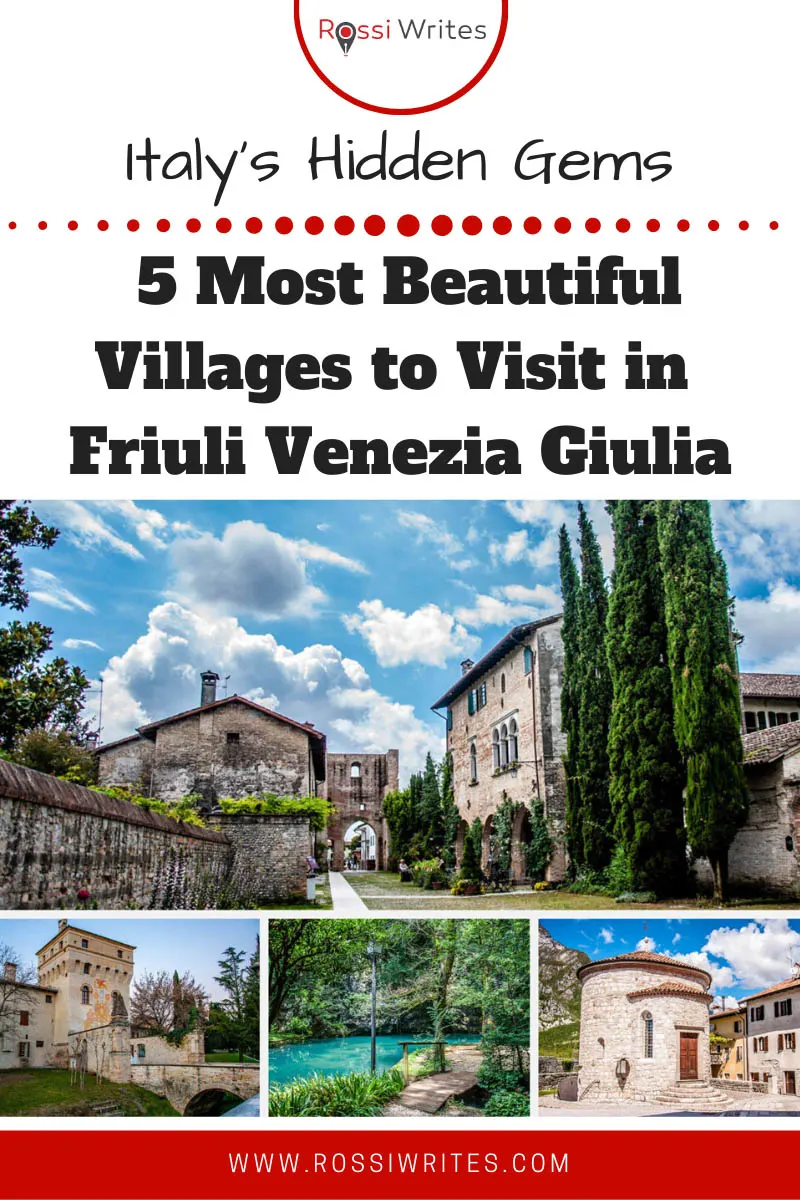Friuli Venezia Giulia is the Italian region with the longest name.
It’s also the northeasternmost corner of Italy and it is mainly known for its capital Triest, its world-class white wine, and its gorgeous beaches.
The best bit about Friuli Venezia Giulia is that it remains firmly off the beaten track. And while it is a place that has lots to offer in terms of millennial history, art traditions, and natural wonders, it can be easily explored without having to battle huge tourist crowds.

This is doubly true if you venture to the region’s hidden gems – its most beautiful borghi. These are small villages and tiny towns in Friuli Venezia Giulia that are both picture-perfect and have rich layers of history.
In and around them you can explore stunning sights of natural beauty and walk next to centuries-old star-shaped military fortifications, drink excellent coffee surrounded by blooming roses and marvel at medieval frescoes, learn more about local crafts and see how they are being weaved into contemporary art installations.
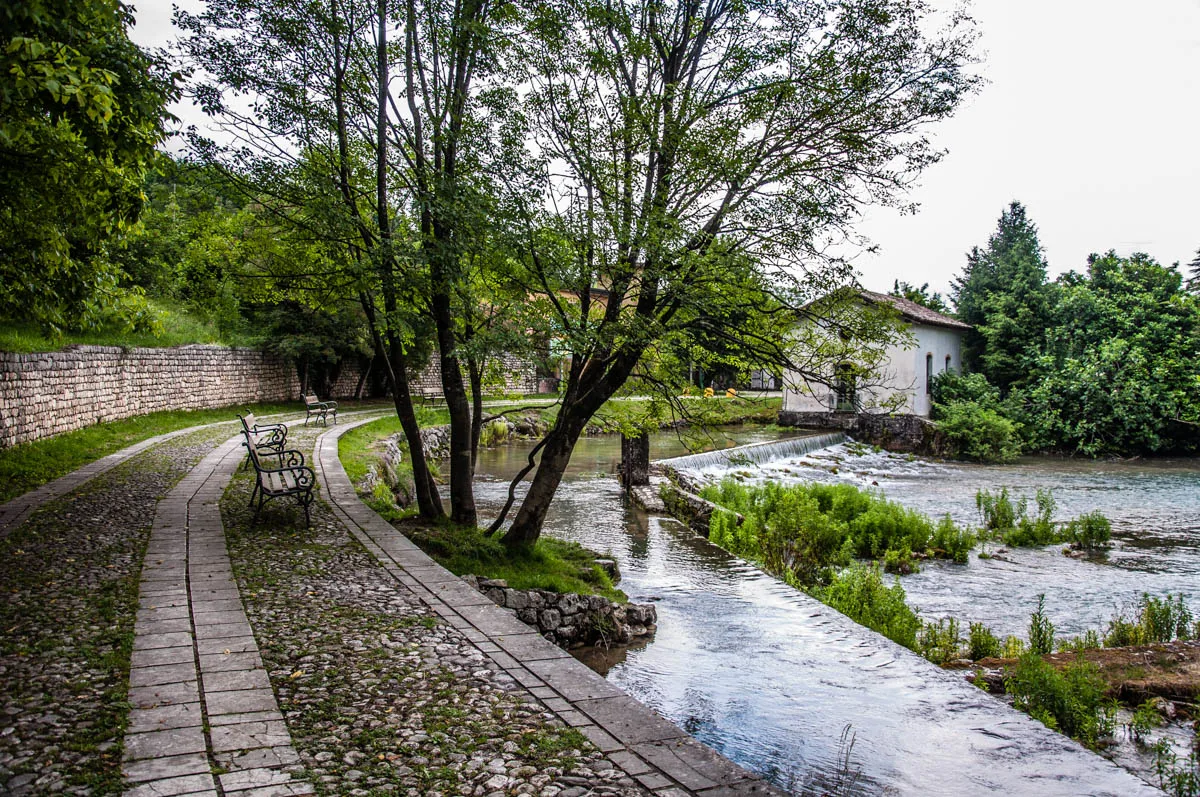
Above all, these are the places where you can take it easy, relax, and get to know Italy and the melting pot of people that shaped it in a truly authentic way.
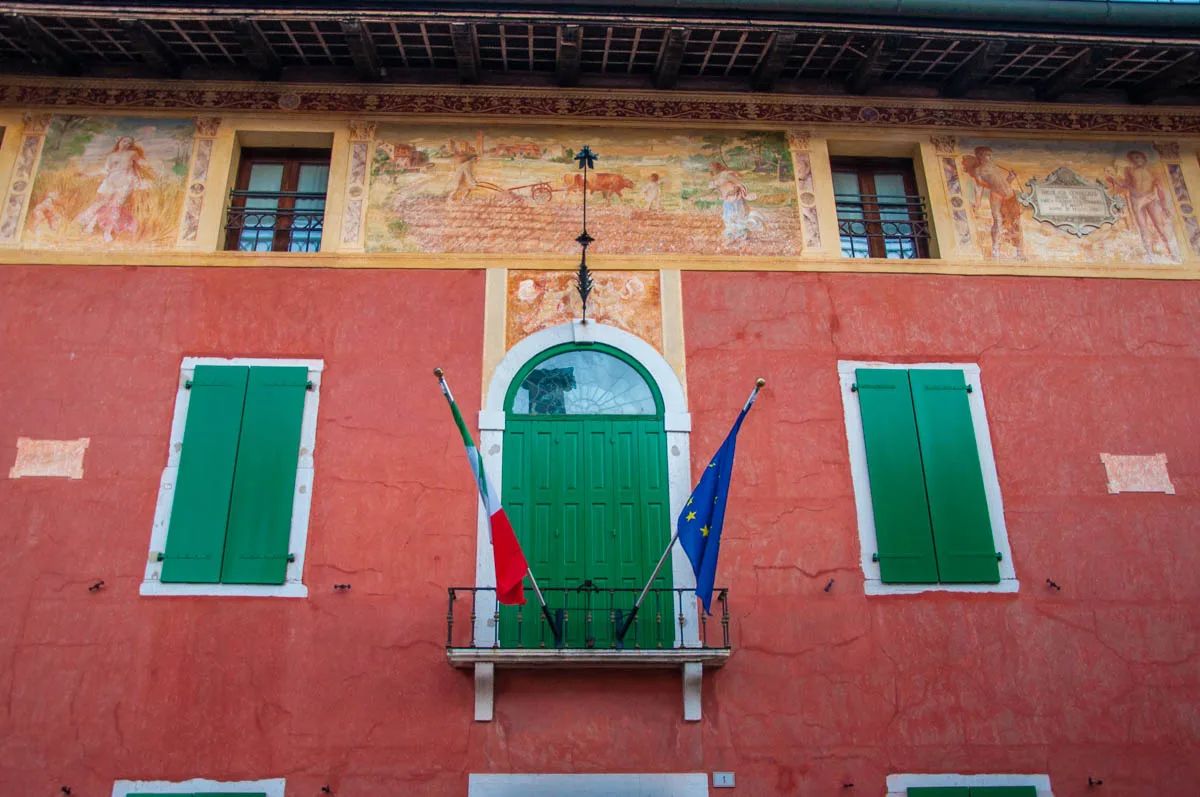
So, with this blog post, I want to introduce you to five of the most beautiful villages in Friuli Venezia Giulia. Their names are Cordovado, Palmanova, Polcenigo, Sesto al Reghena, and Venzone.
For each, I have provided a short historic overview and the best sights to see and things to do in the area.
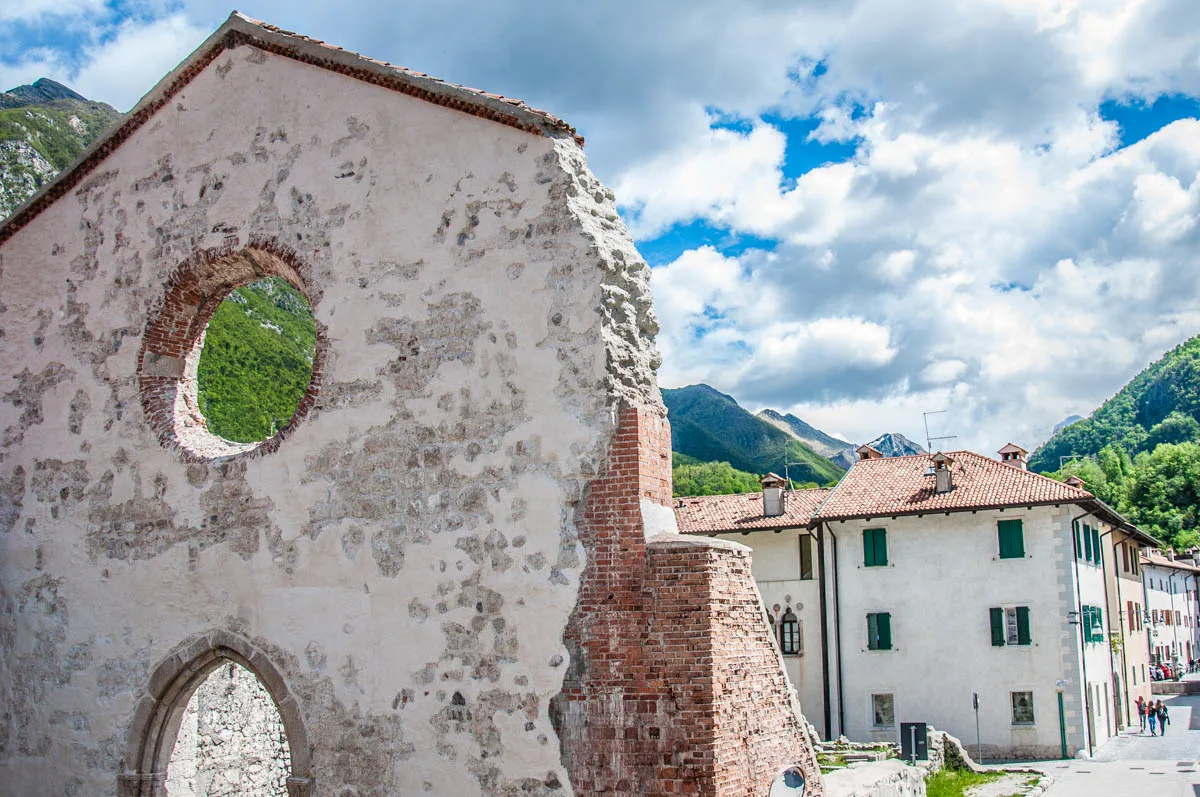
All five are also officially in the list of Italy’s most beautiful villages which is maintained by the association Borghi Piu’ Belli d’Italia and seeks to promote and establish as destinations of unique interest these little-known yet very pretty hidden Italian gems.
So, without further ado, let me introduce you to the:
5 Most Beautiful Villages to Visit in Friuli Venezia Giulia – The Northeasternmost Corner of Italy
Cordovado, Province of Pordenone
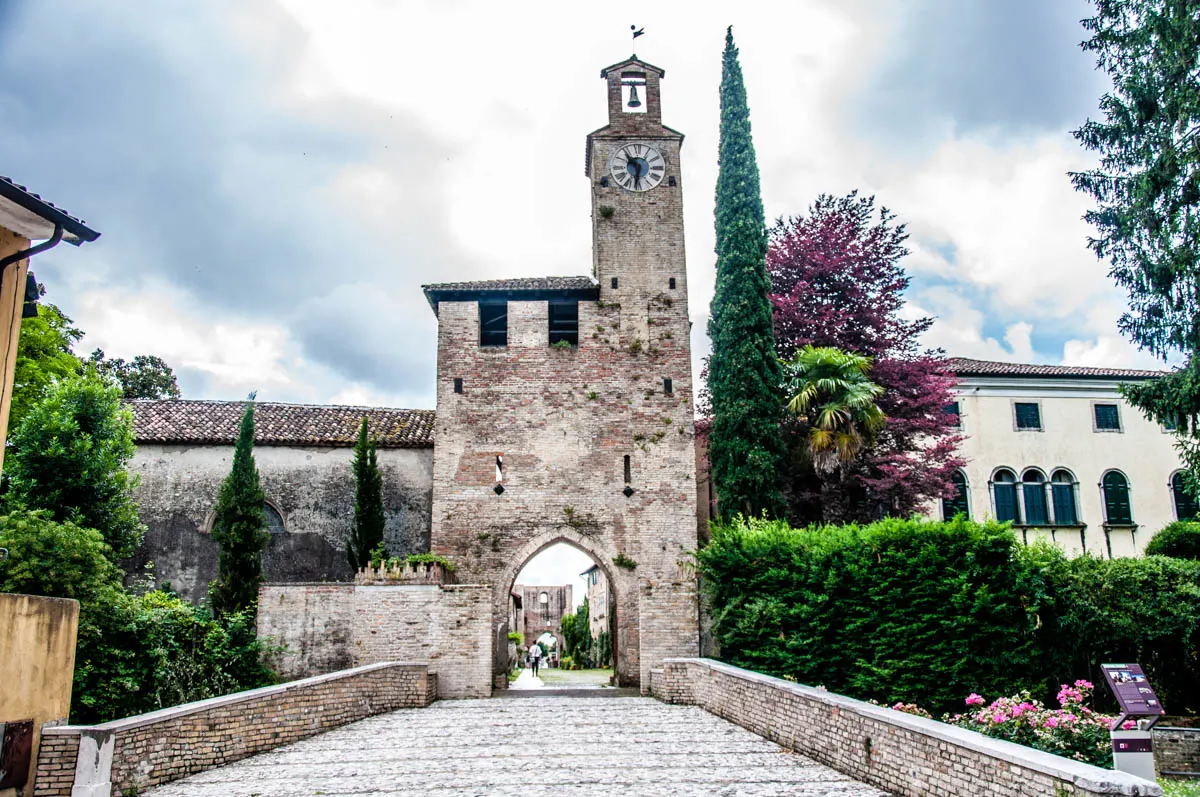
This is a dream of a village where you find yourself surrounded by centuries-old stone buildings and defensive walls that make you wonder what stories they would tell if only they could talk.
In spring and summer, blooming flowers are everywhere, and rose bushes climb up the walls saturating the air with their sweet scent.

Just sitting down for a coffee at the outside tables of the cafe on the cobbled historic street feels so relaxing and so special as your eyes linger over the windows covered with wooden shutters and the little details gracing the surrounding facades.
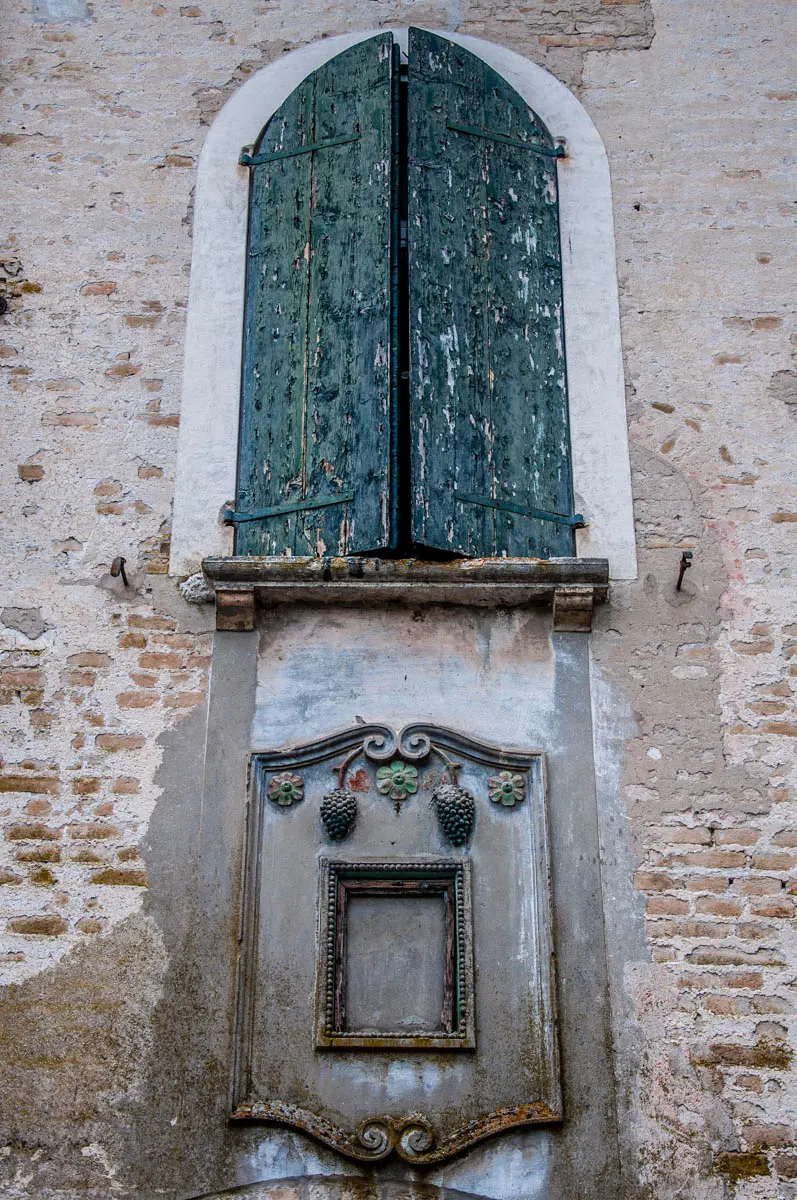
A human settlement has existed there since prehistoric times. It was followed by a castrum – a Roman military camp – protecting a branch of the Roman road Via Augusta. In fact, Cordovado’s name comes from the Latin Curtis de Vado – where curtis meant a big agricultural complex with houses and farms and vadum meant a river ford.
By the 12th century, Cordovado was owned by the Bishops of the nearby town of Concordia Sagittaria. They used it as a summer residence among other things. In 1420 it became part of the Republic of Venice.
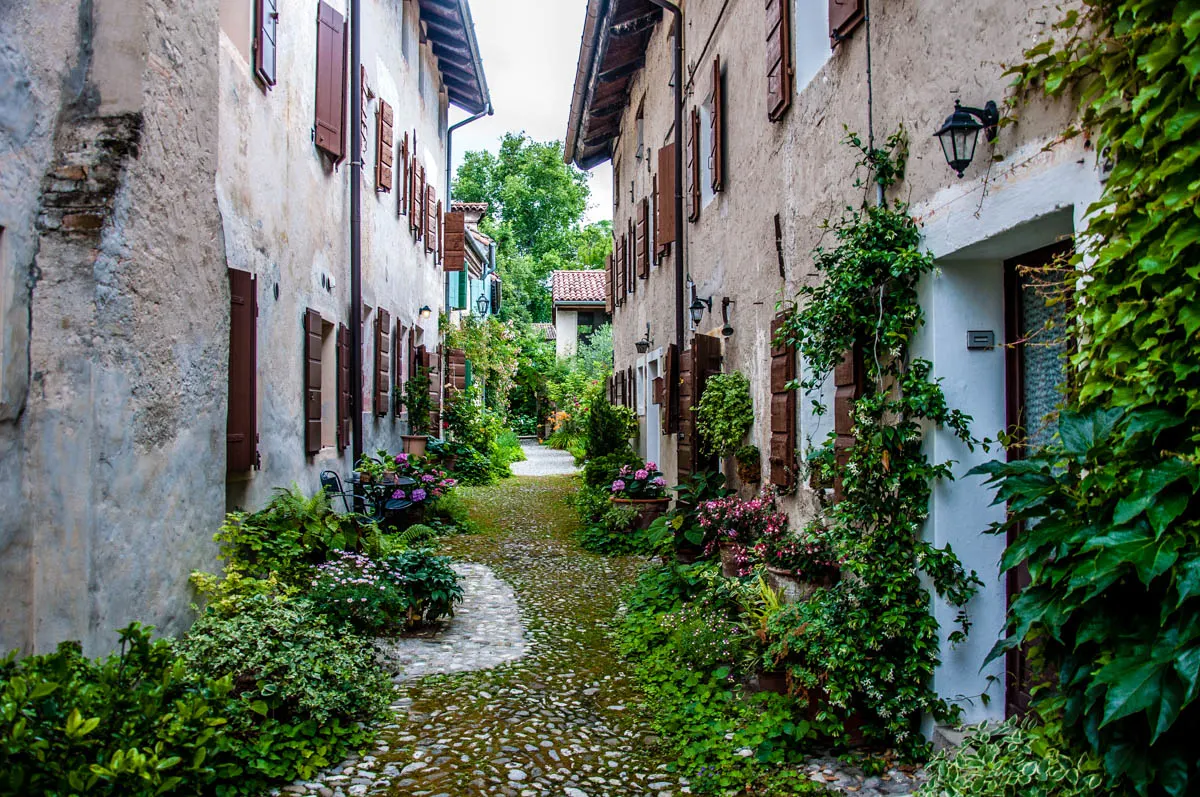
Through the centuries, Cordovado’s historic nucleus slowly took its current outlook with each nook and corner reflecting important events in the village’s development. Most of the historic buildings seen there nowadays are from the 17th to the 19th centuries although some parts like the outer walls, the embankment, the moat, and the two gate towers are older and can be traced back to the Late Middle Ages.
Nowadays, Cordovado’s historic nucleus is surrounded on all sides by the village’s modern-day houses and streets. Yes, as soon as you step through one of the two fortified gates flanked by the long defensive wall, you feel like you have travelled centuries back in time.
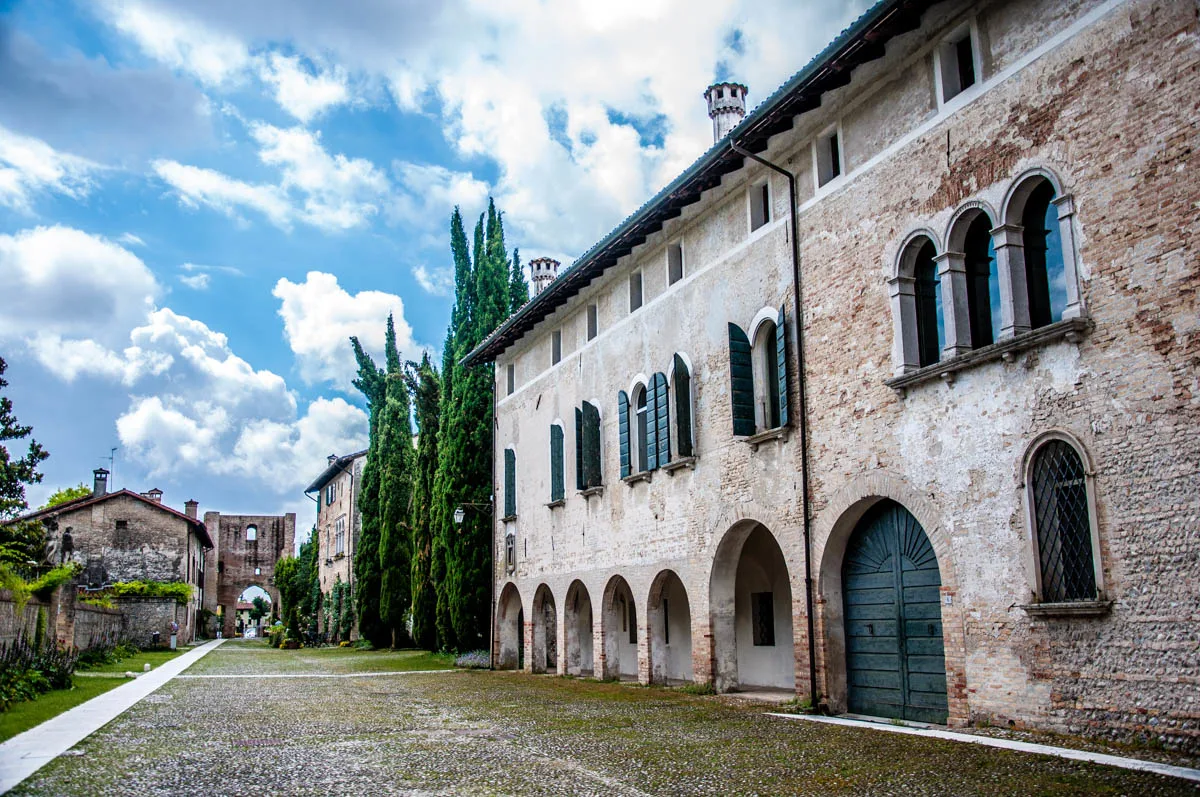
Many ancient churches are an integral part of Cordovado’s historic fabric. A special mention deserve the 15th-century Duomo (also known as the Antica Pieve di Sant’Andrea) in the Romanesque style and the Sanctuary of Our Lady of Grace (Madonna delle Grazie) which was erected in 1603 following an apparition of the Virgin Mary and is in the Venetian Baroque style.
Above all, don’t miss the Castle of Cordovado – originally a medieval structure built on the remains of the Roman castrum. The castle was then remodeled several times through the centuries and a beautiful garden was created around it in the 19th century. A big labyrinth of damascene roses is one of the garden’s major highlights.
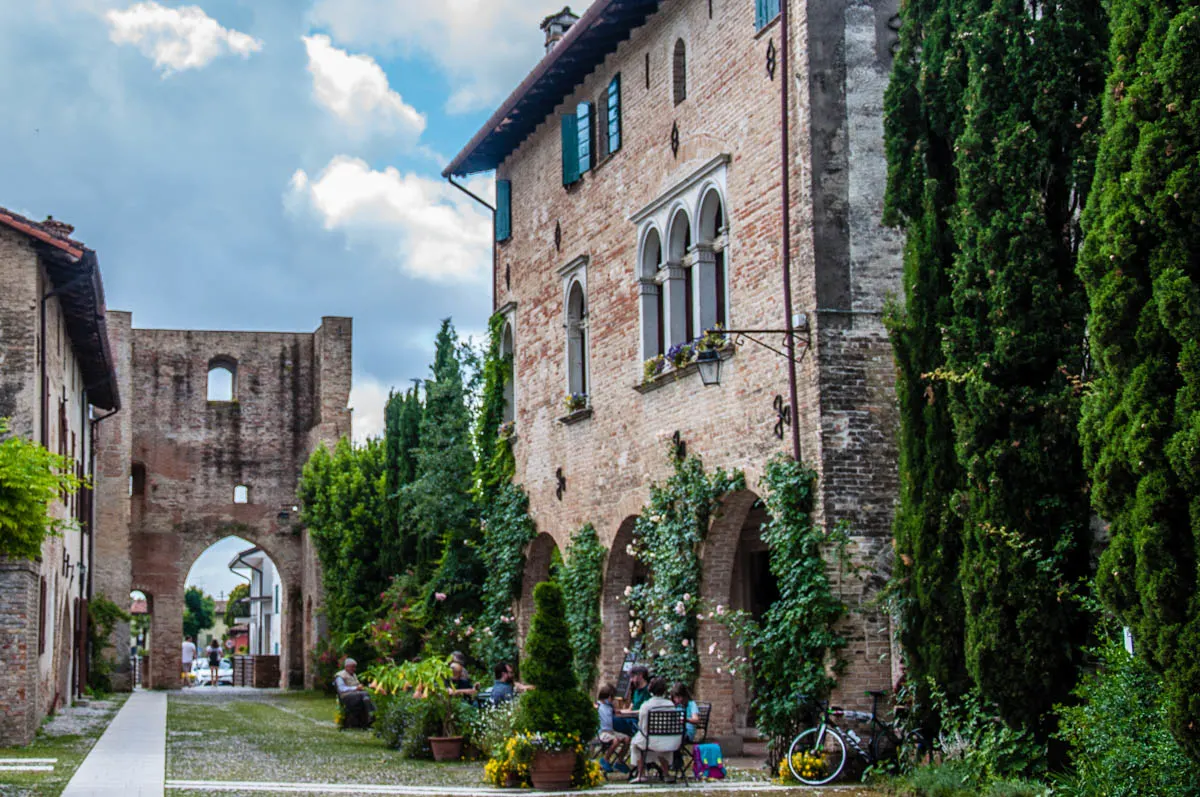
Although tiny, Cordovado has an active social life with a big number of events held here throughout the year. The village is a delight to visit, especially when the roses are in full bloom, and it is a peaceful place to spend a moment to remember in.
What else to see nearby:
Cordovado is less than 10 mins away by car from Sesto al Reghena – another entry on this list of the five most beautiful villages in Friuli Venezia Giulia to visit now. So, you can spend a day splitting your time between the two thus enjoying double the beauty and the history of this corner of Italy.
You can also combine a visit to Cordovado with the provincial capital of Pordenone (under 30 mins away). This is one of the larger cities in the region of Friuli Venezia Giulia and it is also famous as the birthplace of the High Renaissance painter Giovanni Antonio de’ Sacchis who is known as Il Pordenone after his hometown. Pordenone has a pretty historic centre which comes truly alive in the early evenings with people enjoying drinks on the many bars’ and cafes’ outside tables surrounded by frescoed buildings. Pordenone’s Civic Art Museum and Duomo di San Marco deserve a visit.
Cordovado is just under 45 mins from the art city of Udine and just over 1 h 15 mins away from Friuli Venezia Giulia’s capital – the city of Triest.
Alternatively, Cordovado can be easily visited from some of the major cities in the neighbouring region of the Veneto for it stands less than an hour away from Venice and Treviso and under an hour and a half away from Padua and Vicenza.
Palmanova, Province of Udine
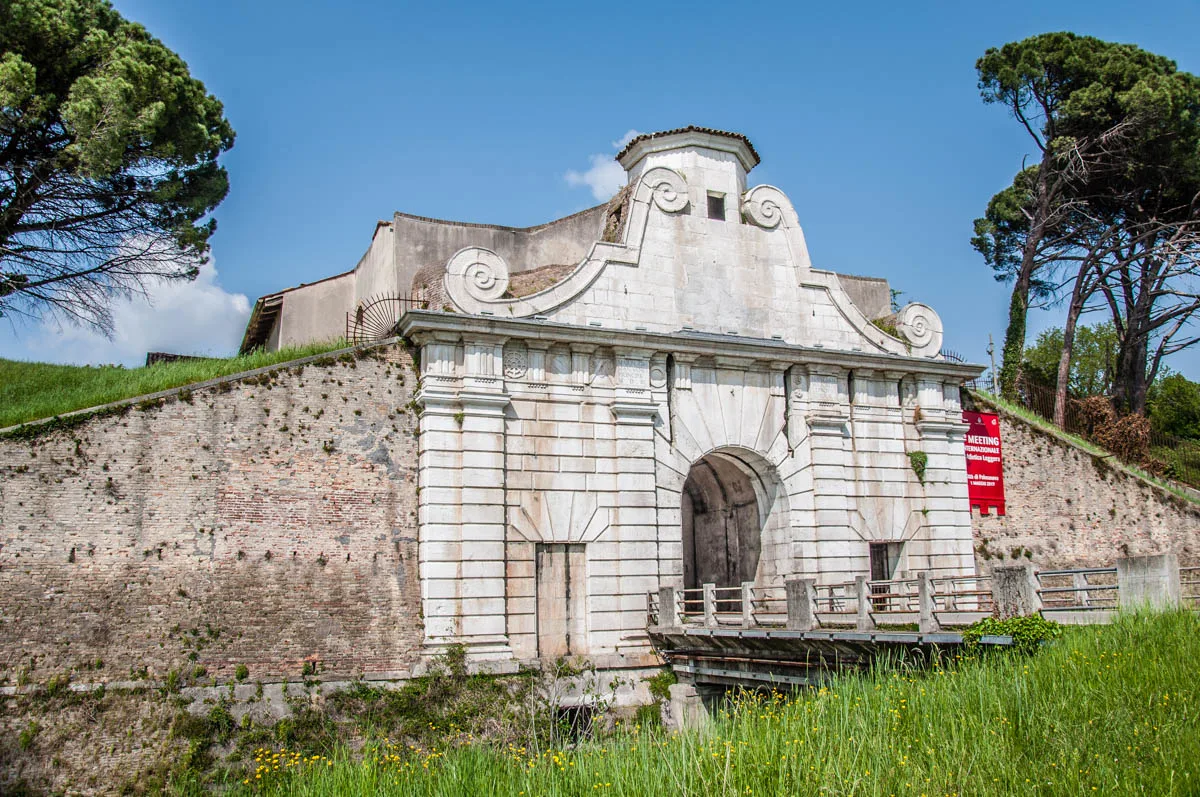
This is the perfect destination for people interested in military history for Palmanova was designed and built as the perfect star-shaped fort by the Republic of Venice.
Its military architecture was revolutionary for its time. The planning and building of Palmanova from scratch were made possible by the genius of Italy’s Renaissance engineers and architects and were stimulated by the then advances in military technology, namely the ever-increasing role in battles of the gunpowder and the cannon.
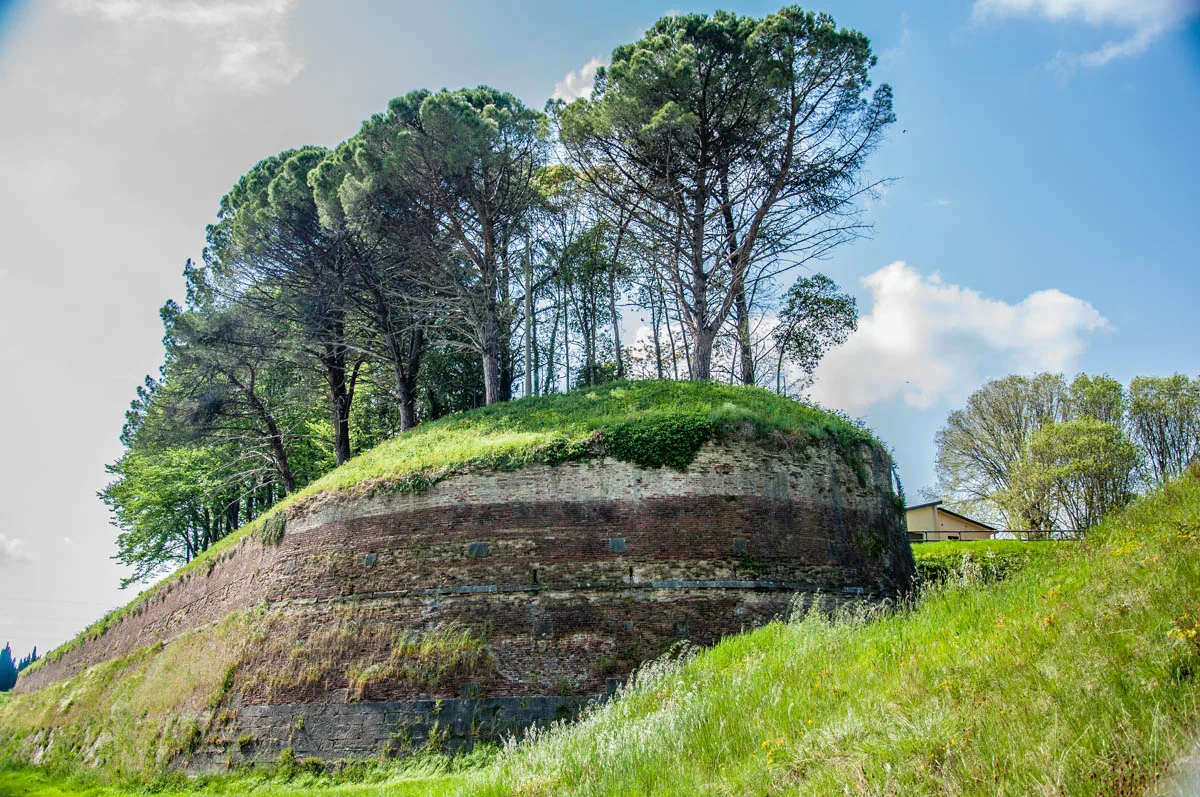
A star-shaped fort (also called bastion fort) has many triangular bastions that just like the points of a star jut forward from the main ring of the fortress.
The resulting starburst shape is difficult for the enemy army to blast with cannons simultaneously on all sides. Plus, the soldiers stationed on each bastion can keep an eye on and protect the adjacent bastions on both sides with overlapping fire.
There are a few star-shaped forts in Europe and Palmanova in Friuli Venezia Giulia in Italy is often referred to as one of the best examples of this type of military architecture.
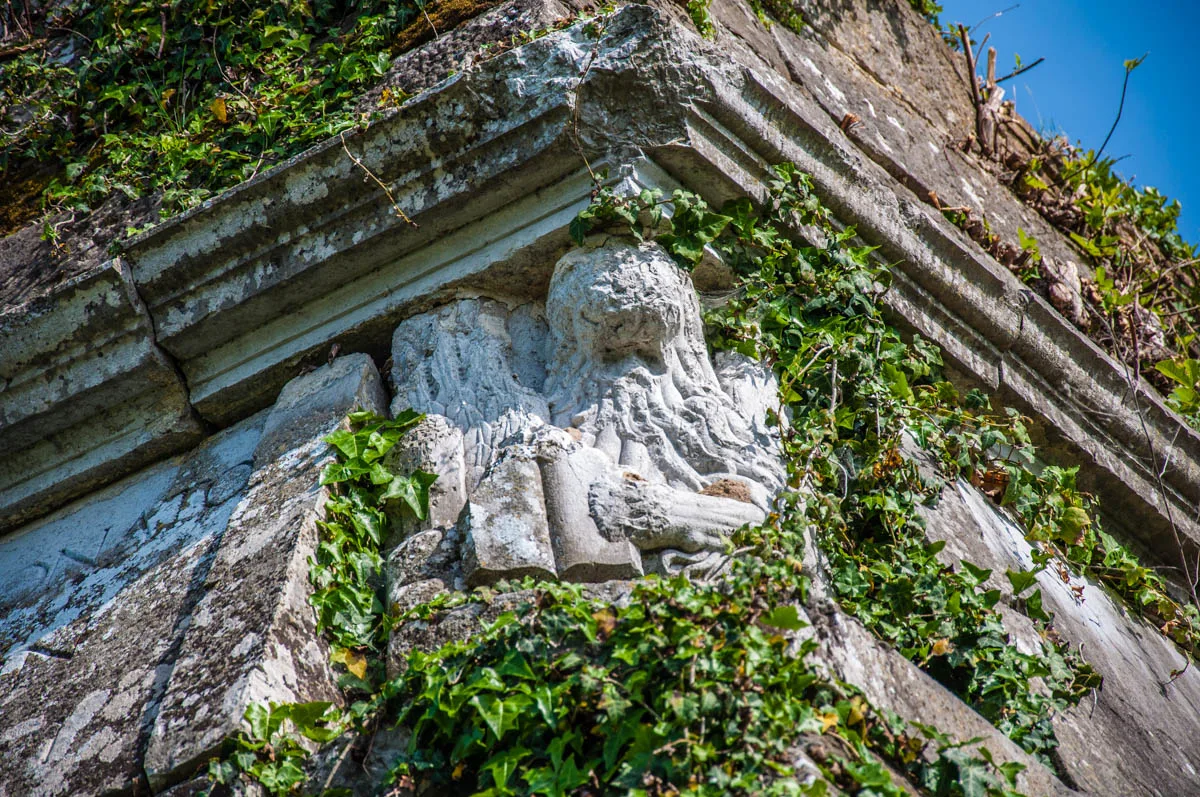
Palmanova is the result of the Republic of Venice’s aspiration to build both a perfectly protected on all sides military fort and an ideal Renaissance city with symmetric proportions and providing a comfortable and safe way of life. The fort was to protect the Venetian lands from attacks of the Ottoman Turks who at the time had conquered many of the lands on the Balkan Peninsula.
There were three main stages in the process of building Palmanova from scratch. The first stage started in 1593 and lasted 30 years. It resulted in the erection of the first circle of the fortress with a circumference of seven kilometres.

Nowadays, Palmanova’s fortifications are included in the UNESCO’s World Heritage Site list. Going for a walk around them is a great way to get close to Palmanova’s history and appreciate the size and strength of the walls that took decades to build.
Quite naturally, not everything has survived the test of time, but the fortifications as they are nowadays give you a great idea of the might and the military acumen of the Republic of Venice.
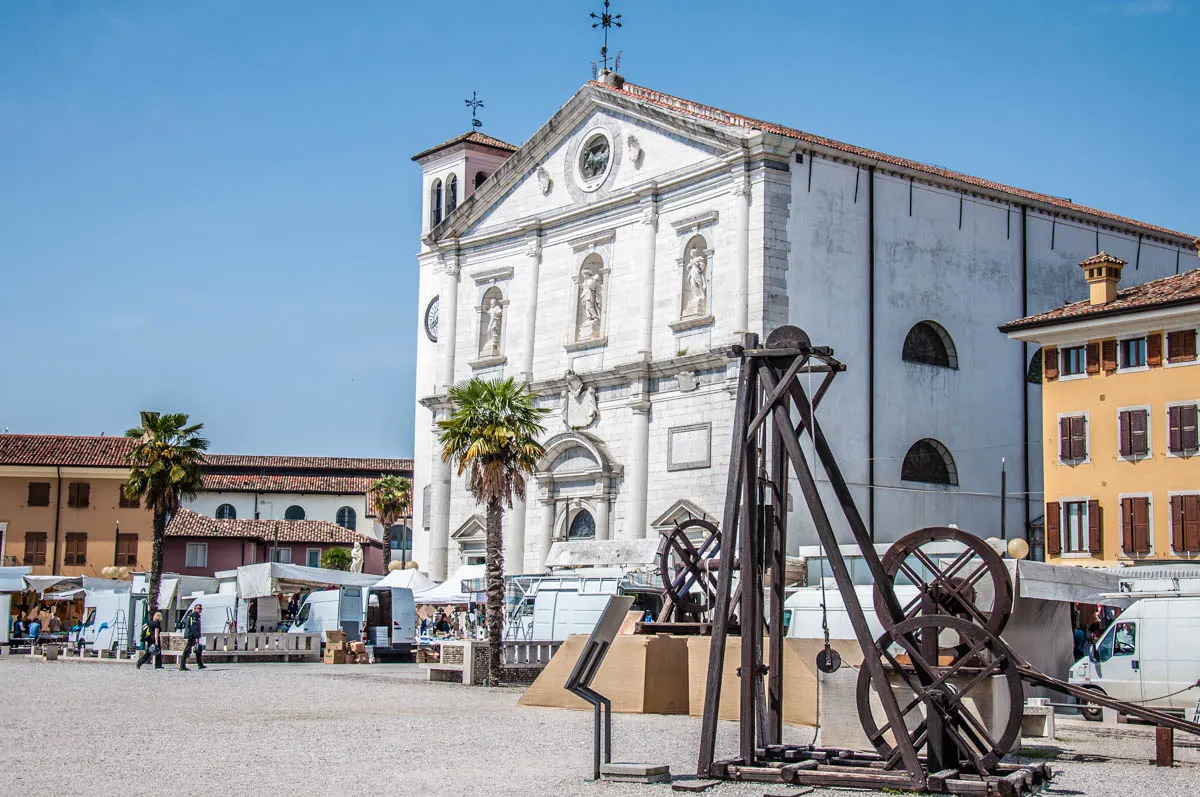
Among the most interesting things to see and do in Palmanova is the Cathedral of the Santissimo Redentore. You will easily spot it on the edge of the fort’s huge round square. The Cathedral’s large body dominates the cityscape.
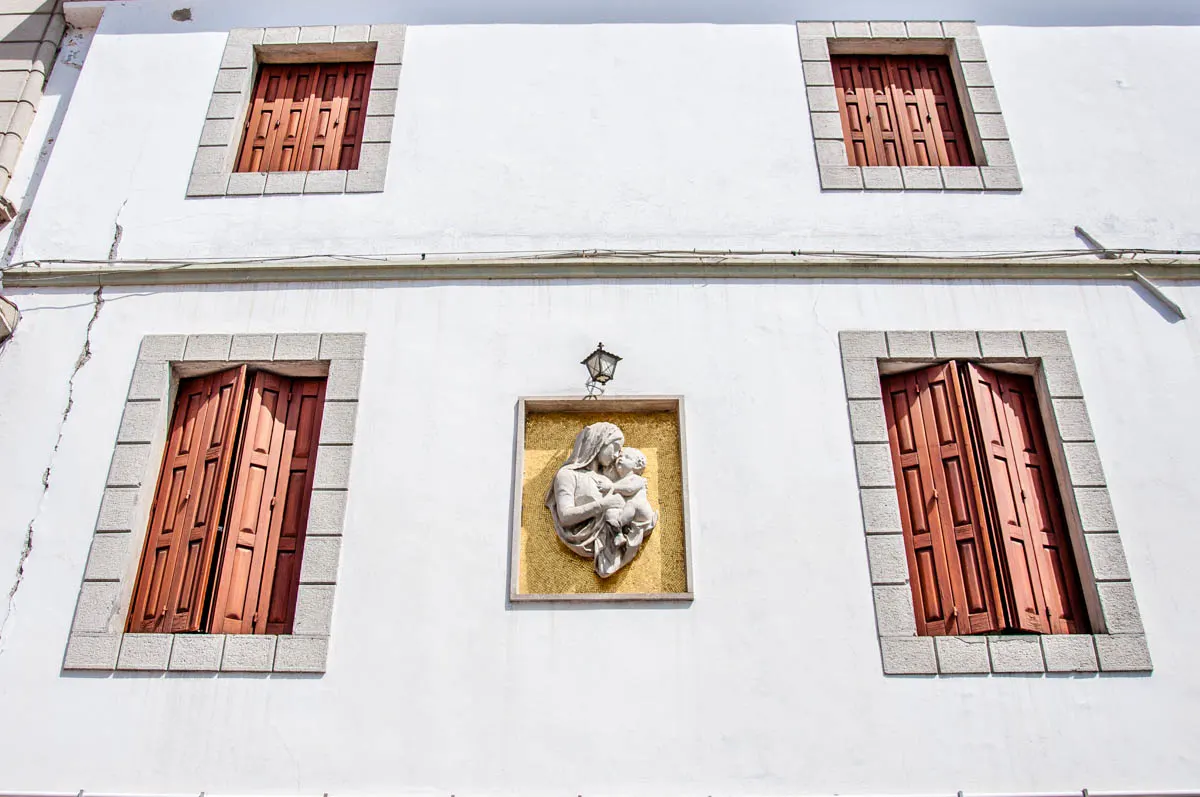
The square itself – Piazza Grande – is faced by some of the most important buildings in town. It also serves as a marketplace and large events are regularly held there.
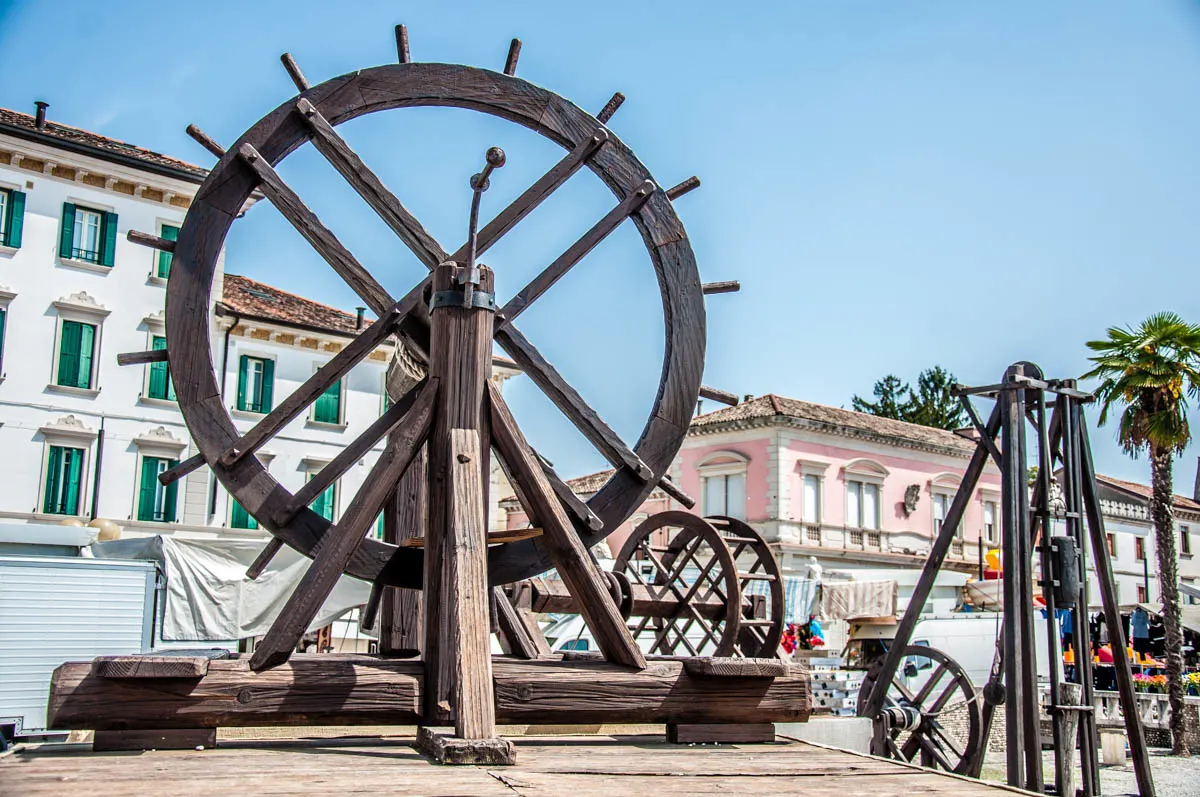
Just a few steps away from Palmanova’s Cathedral and on the edge of Piazza Grande, you can see reproductions of the machines that were specifically developed and then used for the construction of Palmanova’s fortifications.
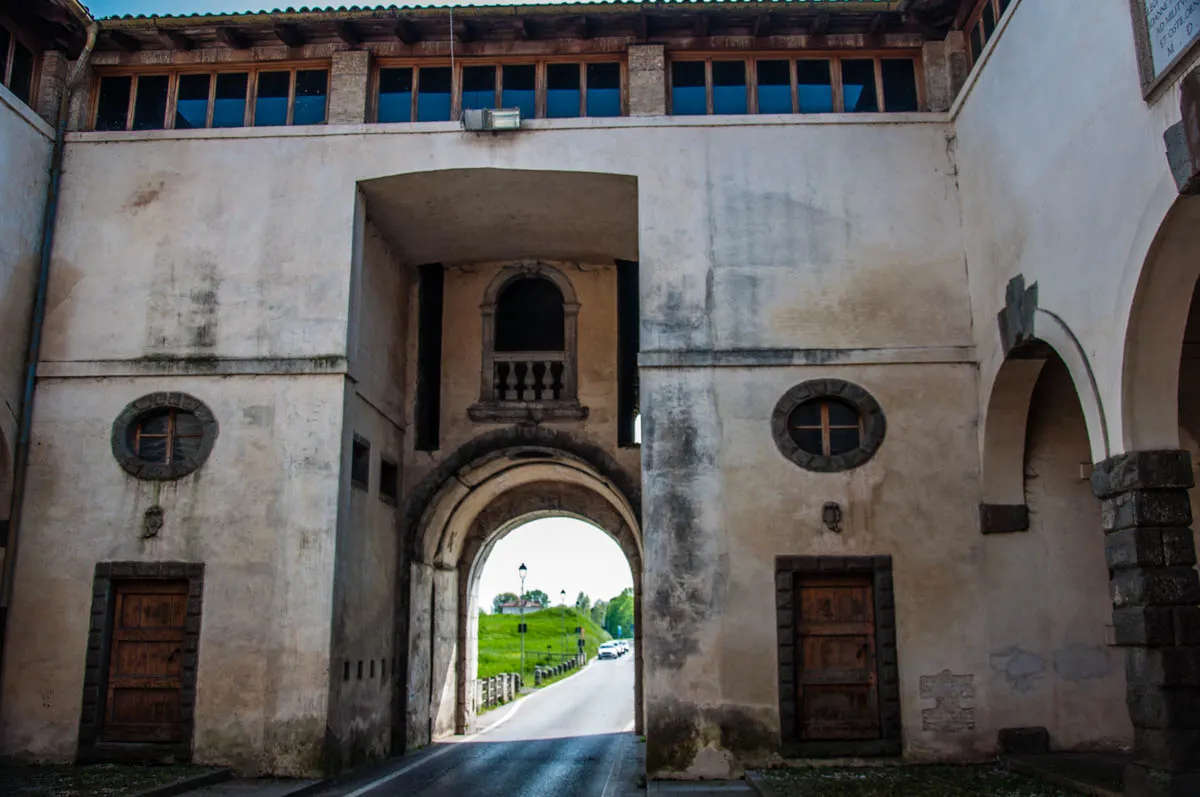
In addition, don’t miss Palmanova’s three monumental gates – Porta Udine, Porta Cividale, and Porta Aquileia.
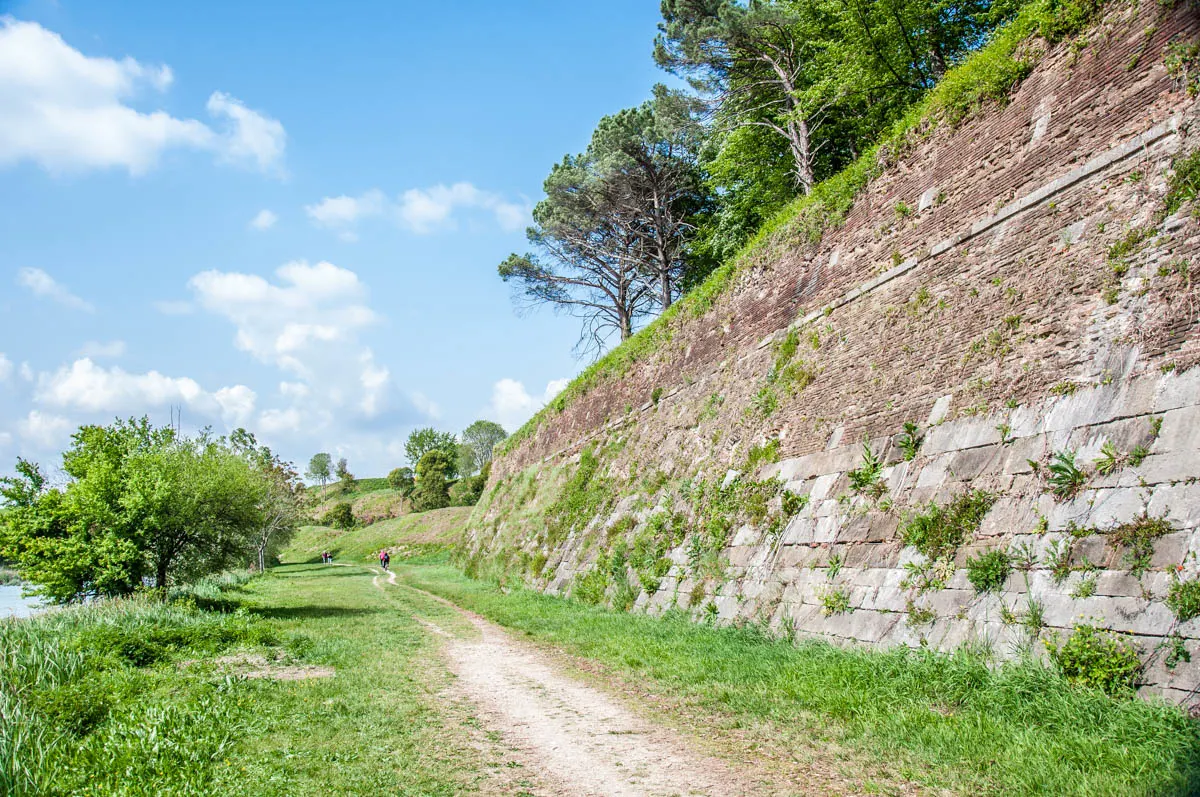
Also, make sure that you go for a walk by following the nice and wide path between the moat and the defensive walls.
In order to learn more about Palmanova’s military architecture and its role in the military history of this corner of Italy, pay a visit to the War and History Museum.
What else to see nearby:
Palmanova is a great starting point for a visit to nearby Aquileia (less than 20 mins away). Aquileia is an ancient Roman city that nowadays is on the UNESCO World Heritage List. In the adjacent area, don’t miss Grado (less than half an hour away from Palmanova) – a famous spa town with gorgeous beaches and many archaeological finds dating to when it was settled by the Romans
Alternatively, you can combine a visit to Palmanova with the provincial capital of Udine (25 mins away). This is one of the major cities in the region of Friuli Venezia Giulia and one of the most interesting yet little-visited art and historic cities in Italy. Don’t miss the Castle of Udine which nowadays is the seat of the city’s historic and art museums. Other must-see sights here are the Archbishop’s Palace with the Diocesan Museum and the Tiepolo Galleries, Casa Cavazzini (seat of the Museum of Modern and Contemporary Art), the Cathedral of Santa Maria Annunziata, as well as the city’s many squares (especially, Piazza Liberta’ with its clock tower that emulates the St. Mark’s Clock Tower in Venice).
Palmanova is just over 40 mins away by car from Venzone – another entry on this list of the five most beautiful villages in Friuli Venezia Giulia to visit now. So, you can spend a day splitting your time between the two thus enjoying double of the beauty and the history of this corner of Italy. Palmanova is just under 50 mins away from the city of Pordenone and just under 45 mins away from Friuli Venezia Giulia’s capital – the city of Triest.
Alternatively, Palmanova can be easily visited from some of the major cities in the neighbouring region of the Veneto for it stands between 1 h 15 mins and 1 h 45 mins away from Treviso, Venice, Padua, and Vicenza.
Polcenigo, Province of Pordenone
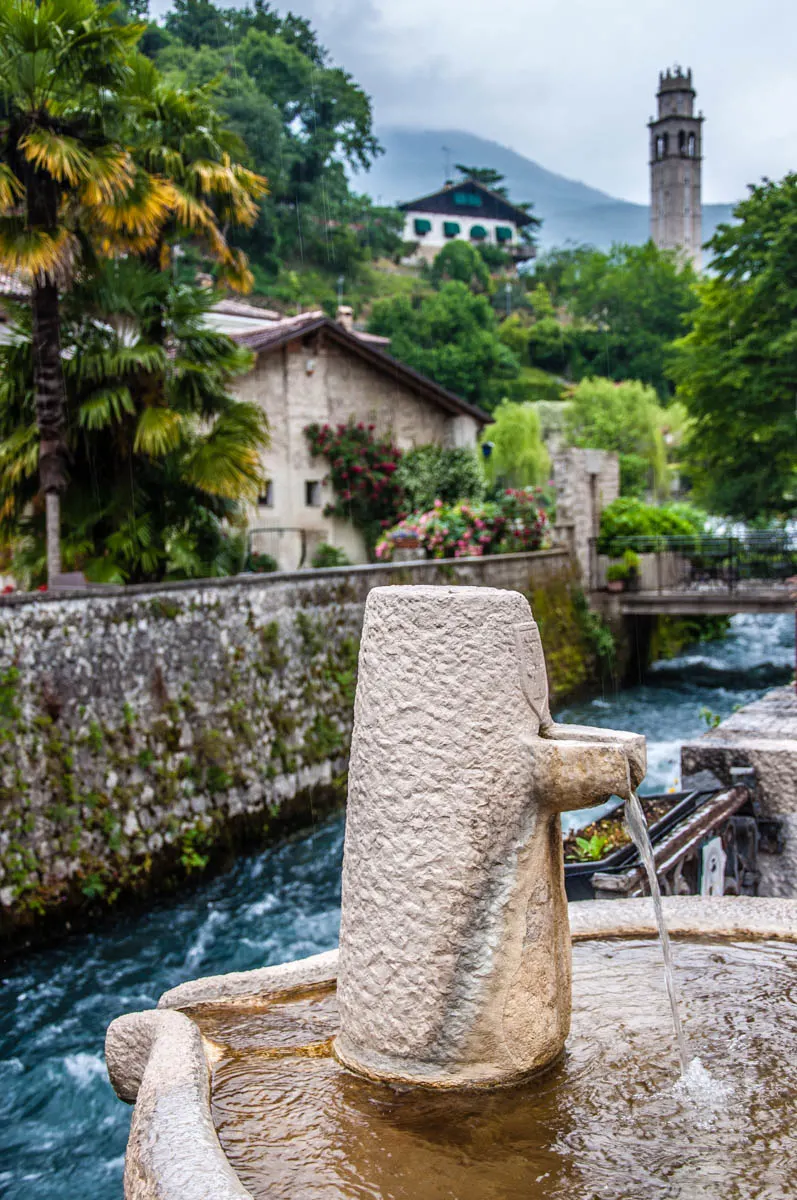
Polcenigo is a beautiful village in the Italian region of Friuli Venezia Giulia that preserves the centuries-old traditions of the weaving craft. It is also a place rich in waters and the springs of two rivers – Livenza and Gorgazzo – are in its immediate surroundings.
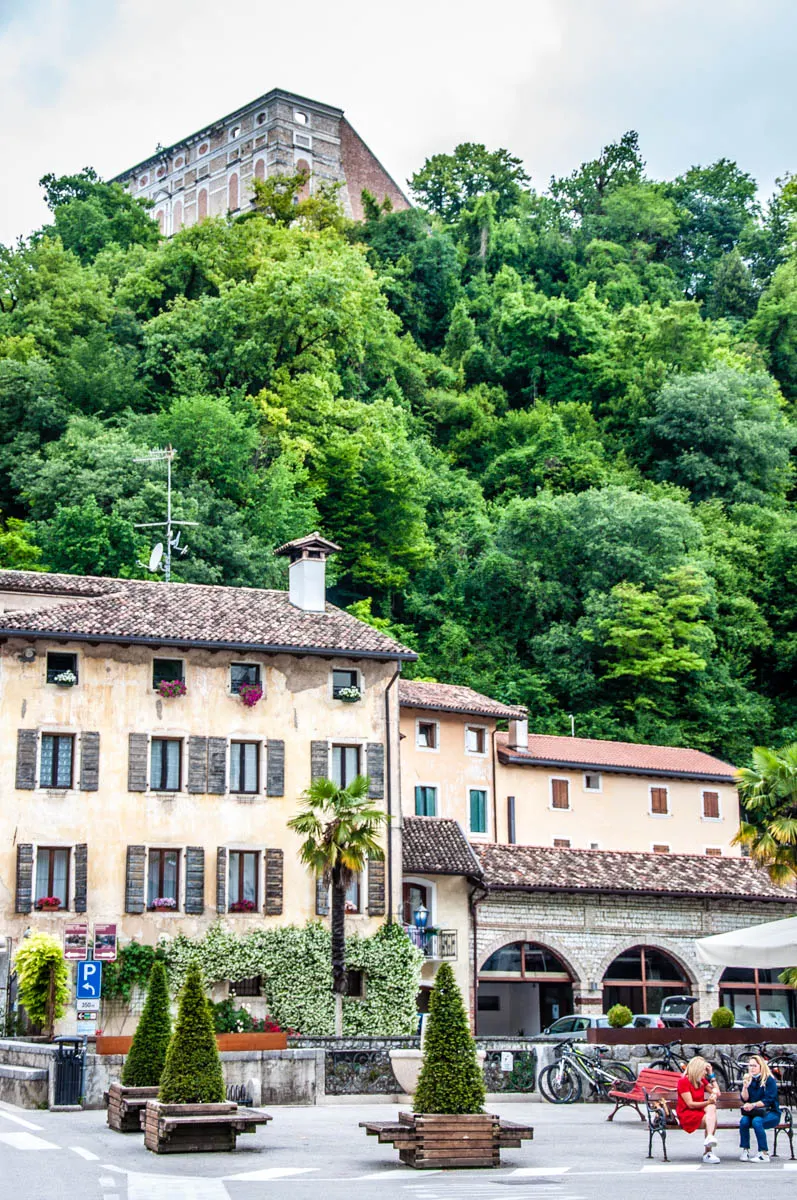
The village huddles around the base of a small hill and the fast river of Gorgazzo flows through its historic centre.
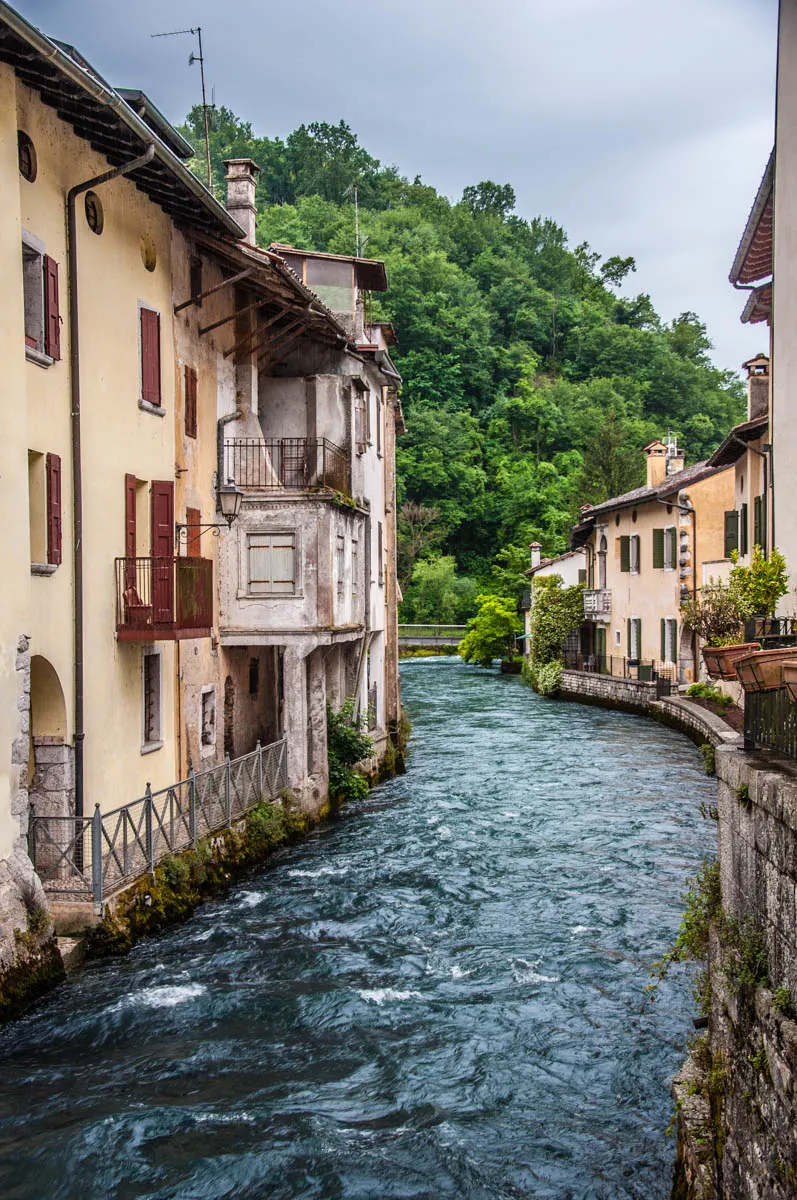
The ruins of a large villa built on top of the remains of a medieval castle overlook Polcenigo giving it a mysterious air. Otherwise, the village is a calm and peaceful spot which, nevertheless, enjoys an active social calendar with many events and creative workshops taking place here all throughout the year.
The annual exhibition of Nativity Scenes is particularly popular and its roots stretch back to the 13th century when the Franciscan friars of the Convent of San Giacomo would prepare a traditional Nativity Scene during the Christmas period.
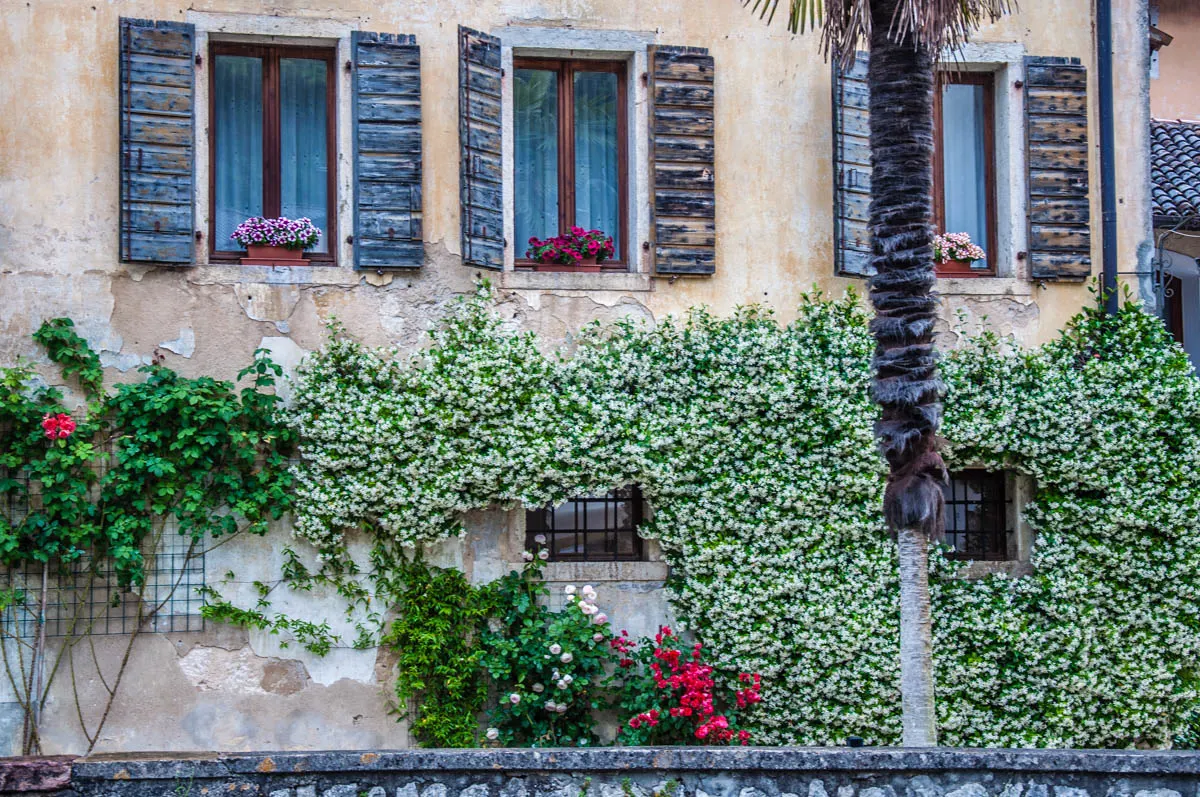
The Weaving School and the Culinary Art Museum are two local points of interest in addition to the many churches and chapels dotted around Polcenigo. In and around the village, you will also find a few centuries-old mills and historic buildings.
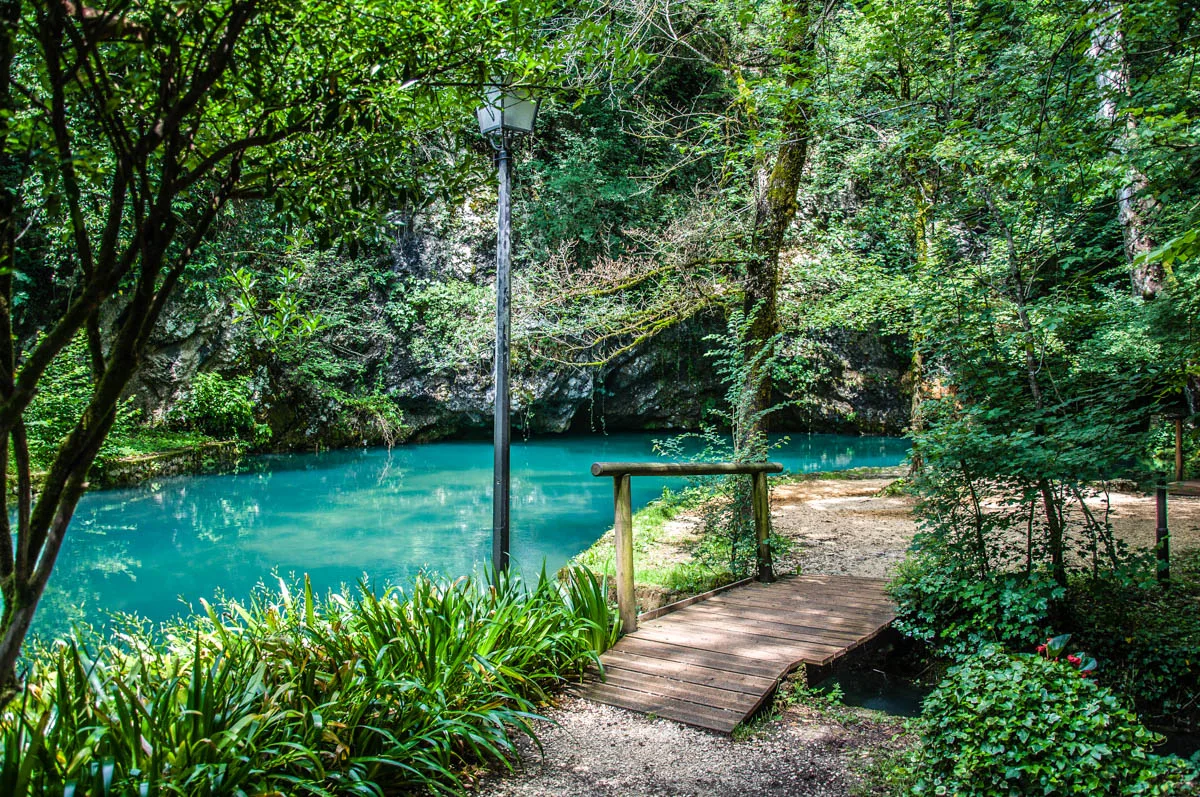
The most attractive thing about Polcenigo though is its intrinsic link to water. Come here to see the spring of the river Gorgazzo (known locally as Sorgente del Gorgazzo). This is an intensely teal blue pond fed by cold waters. They reach the surface from an underground cave thanks to the second deepest karst siphon spring in Europe. The cave has been explored up to 212 m of depth but it continues even deeper in the bowels of the earth.
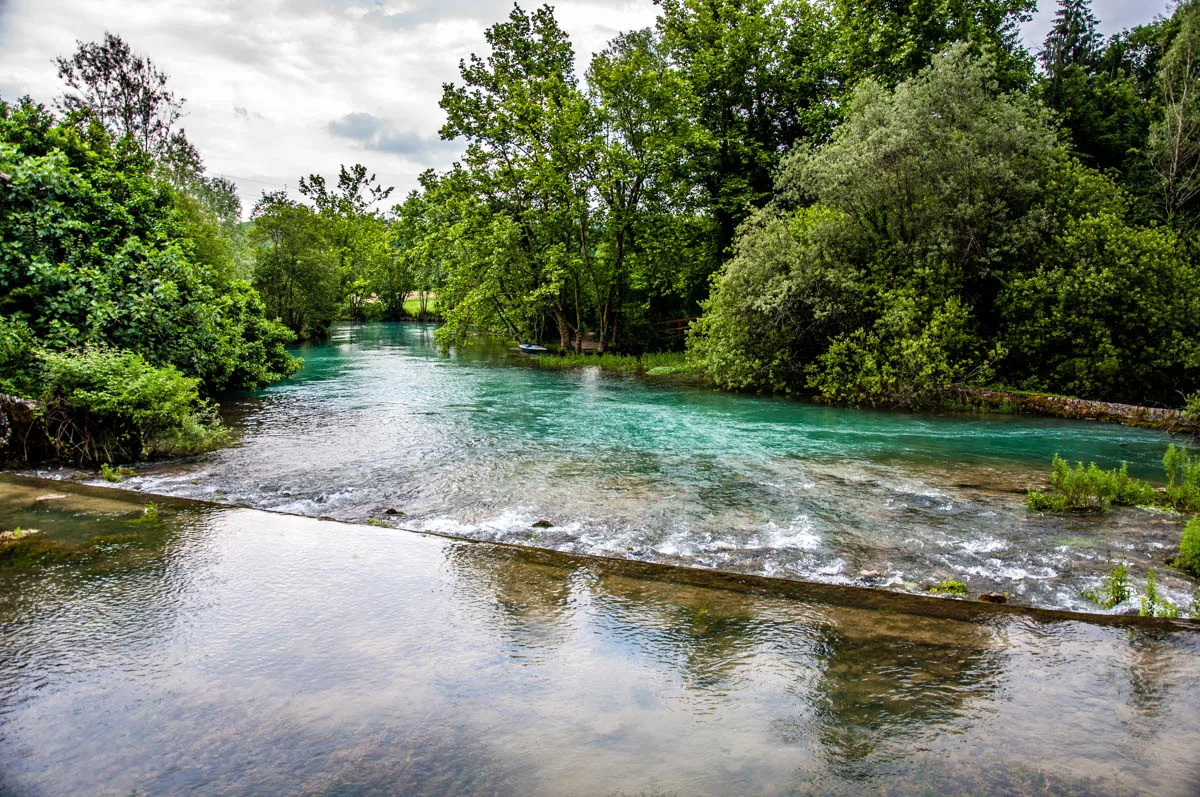
Then head to the nearby springs of the river Livenza. Again, this is an intensely blue sight.
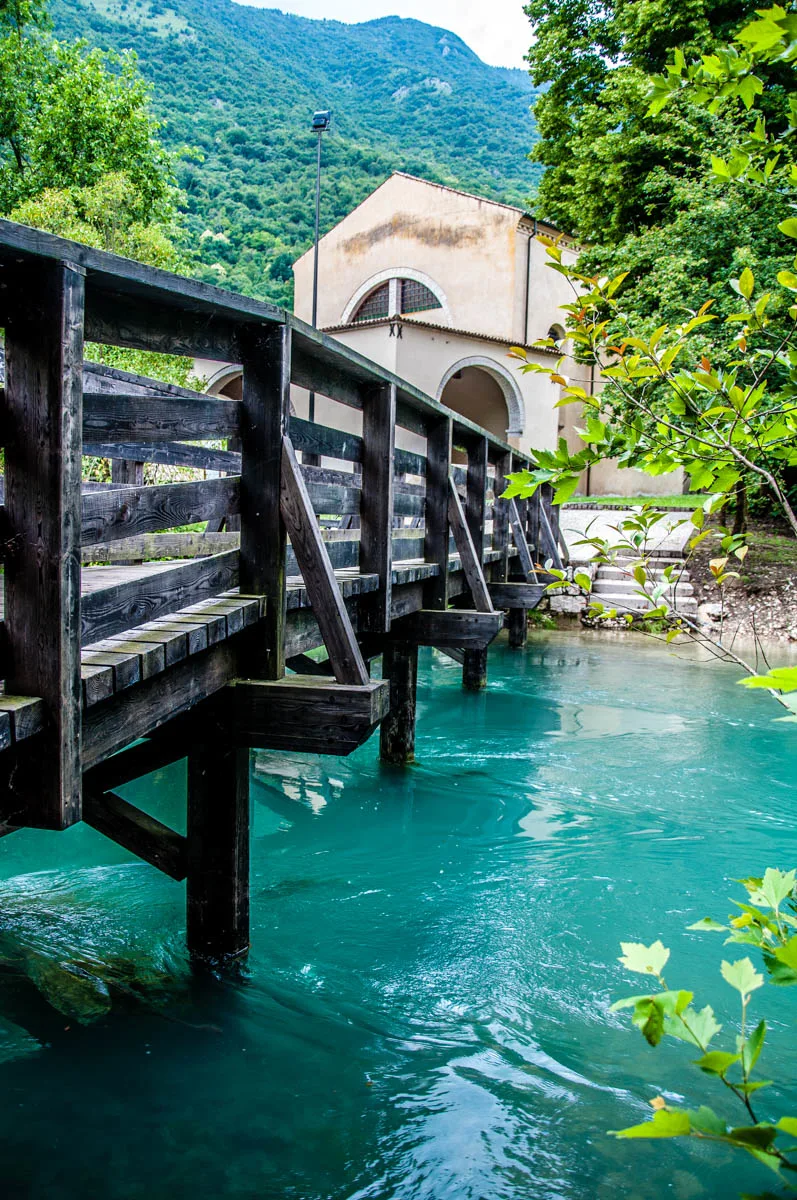
You will find the Livenza’s springs in the immediate vicinity of the Sanctuary of the Santissima Trinita’ near Polcenigo.
Right next to the Livenza’s springs is the marshy area known as Palu’ di Livenza. The remnants of prehistoric pile dwellings have been unearthed here confirming that people have been attracted to this water-rich place for millennia. Nowadays, the archaeological site of Palu’ di Livenza is inscribed in the UNESCO’s World Heritage List.
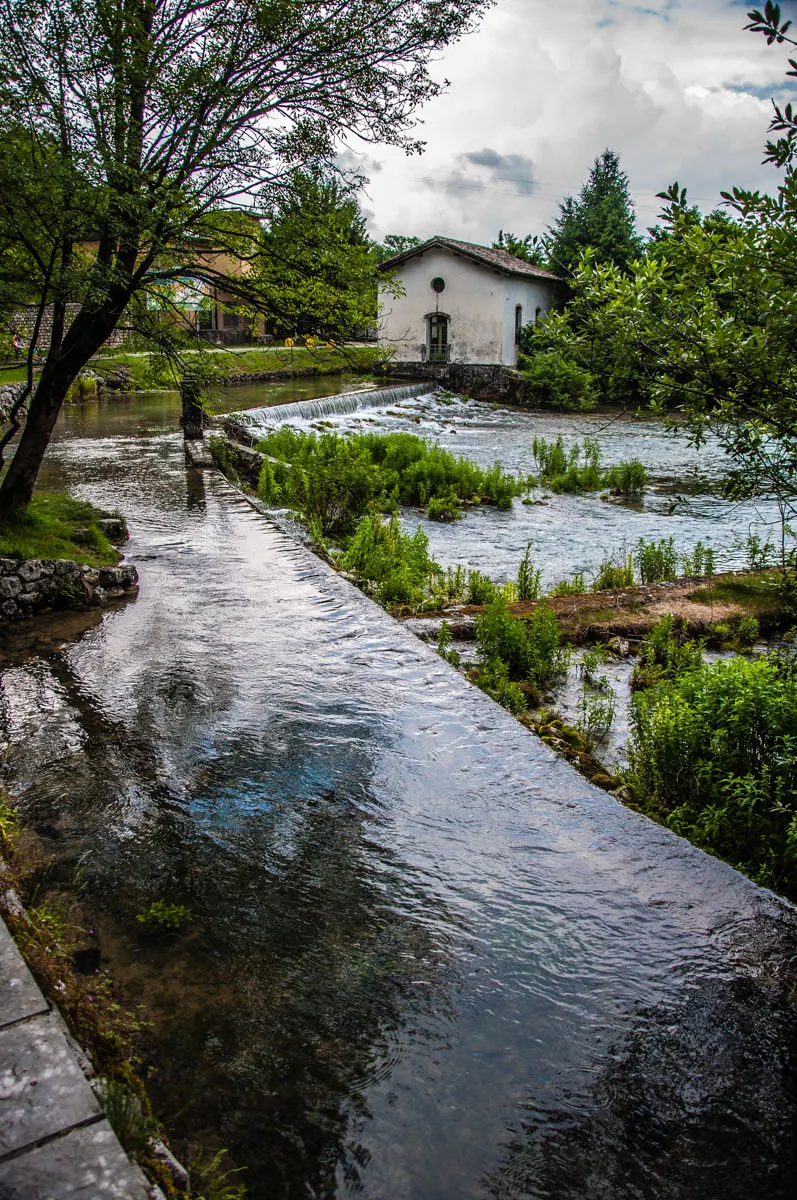
Palu’ di Livenza is also one of the locations of the annual event Humus Park. This is Italy’s most important Land Art event with land art being an artistic form using natural materials.
Another place of interest near Polcenigo is the Rural Park of San Floriano. It is a place to get close to nature both on foot and bike, to enjoy a nice picnic at, and to buy organic products from.
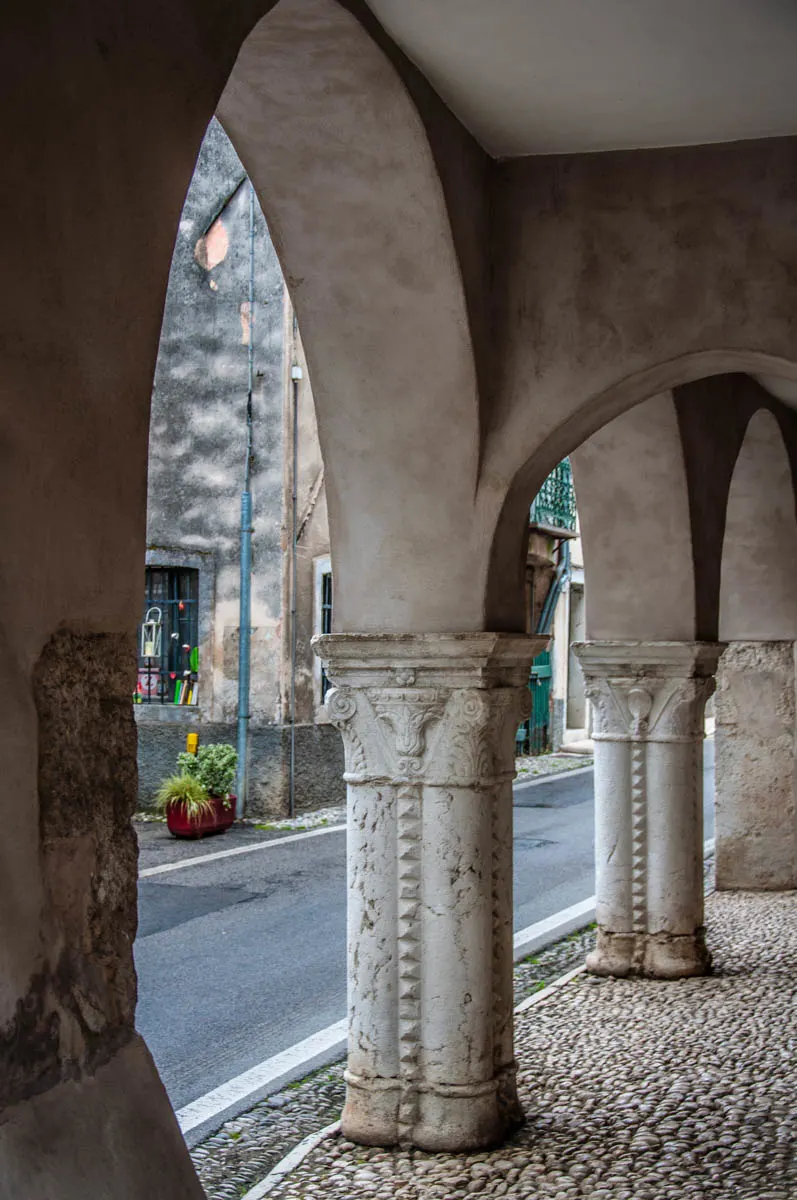
Polcenigo really is an unmissable corner in this part of Italy. Surrounded by lush nature, rich in history, dedicated to the preservation and promotion of traditional crafts, and with stunning water resources nearby, this small place in the region of Friuli Venezia Giulia offers many things to do, see and enjoy there for memories that last a lifetime.
What else to see nearby:
You can combine a visit to Polcenigo with the provincial capital of Pordenone (only 20 mins away). This is one of the larger cities in the region of Friuli Venezia Giulia and it is also famous as the birthplace of the High Renaissance painter Giovanni Antonio de’ Sacchis who is known as Il Pordenone after his hometown. Pordenone has a pretty historic centre which comes truly alive in the early evenings with people enjoying drinks on the outside tables of the many bars and cafes surrounded by frescoed buildings. Pordenone’s Civic Art Museum and Duomo di San Marco deserve a visit.
Polcenigo is only 35 mins away by car from Sesto al Reghena – another entry on this list of the five most beautiful villages in Friuli Venezia Giulia. So, you can spend a day splitting your time between the two thus enjoying double the beauty and the history of this corner of Italy.
Polcenigo is just under 1 h 10 mins from the art city of Udine and just over 1 h 40 mins away from Friuli Venezia Giulia’s capital – the city of Triest.
Alternatively, Polcenigo can be easily visited from some of the major cities in the neighbouring region of the Veneto for it stands less than an hour away from Treviso and between 1 h 10 mins and 1 h 35 mins away from Venice, Padua, and Vicenza.
Sesto al Reghena, Province of Pordenone
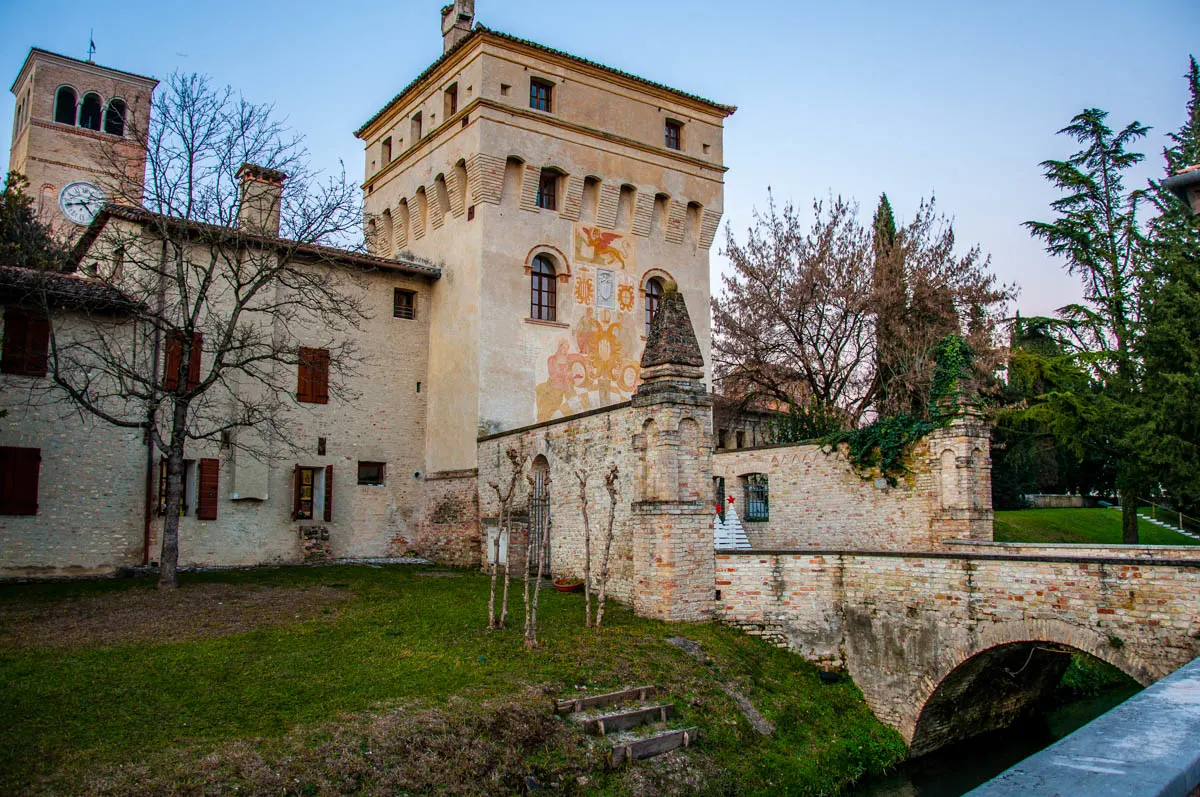
Sesto al Reghena is a lovely village with tall houses in pastel colours with frescoed facades and a fortified Benedictine Abbey that was founded in the 8th century.
I loved the time – however short – that I spent there as it was the perfect mix of art, history, and beauty and convinced me that every moment in Italy counts for there is always a hidden gem to discover for yourself just around the corner.
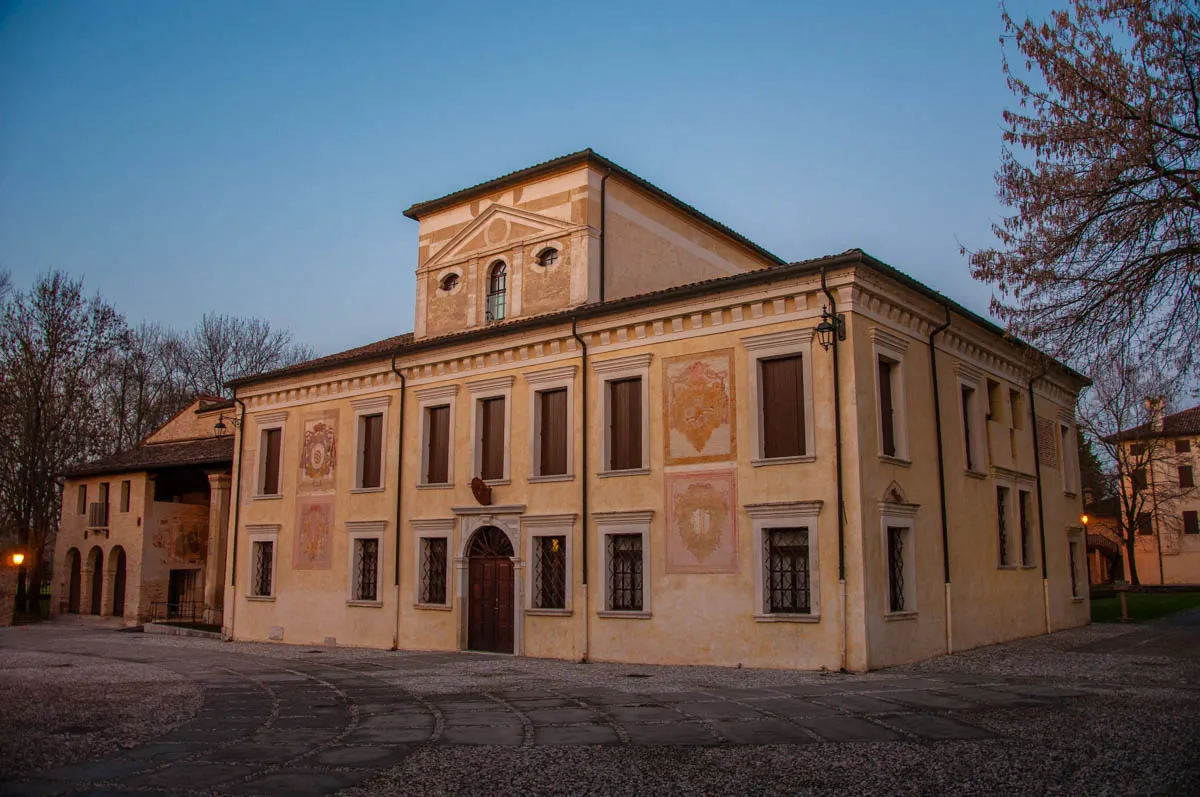
We visited Sesto al Reghena a bit on a whim at the end of a day happily spent exploring the nearby town of Portogruaro with its Venetian Gothic houses and fabulous Archaeological Museum. We had then travelled the short distance to the neighbouring Concordia Sagittaria to admire the Roman mosaics and other Roman remains testifying to the glorious ancient past of this small town in the Veneto.
It was towards the end of the day when the sun was just about thinking of setting that we decided to venture into Friuli Venezia Giulia and have a quick look around one of its most beautiful villages – Sesto al Reghena.
A short drive later, we found ourselves in the midst of a medieval setting. It was like we had been plucked from our modern days and transported back to the Middle Ages.
To learn more about the history of Sesto al Reghena, we joined the last for the day guided tour of its Abbey. First, we were shown two large frescoes depicting Heaven and Hell on the opposite walls of the Abbey’s vestibule. Then we proceeded past a number of priceless archaeological artifacts to find ourselves in a huge historical church with extraordinary works of art.
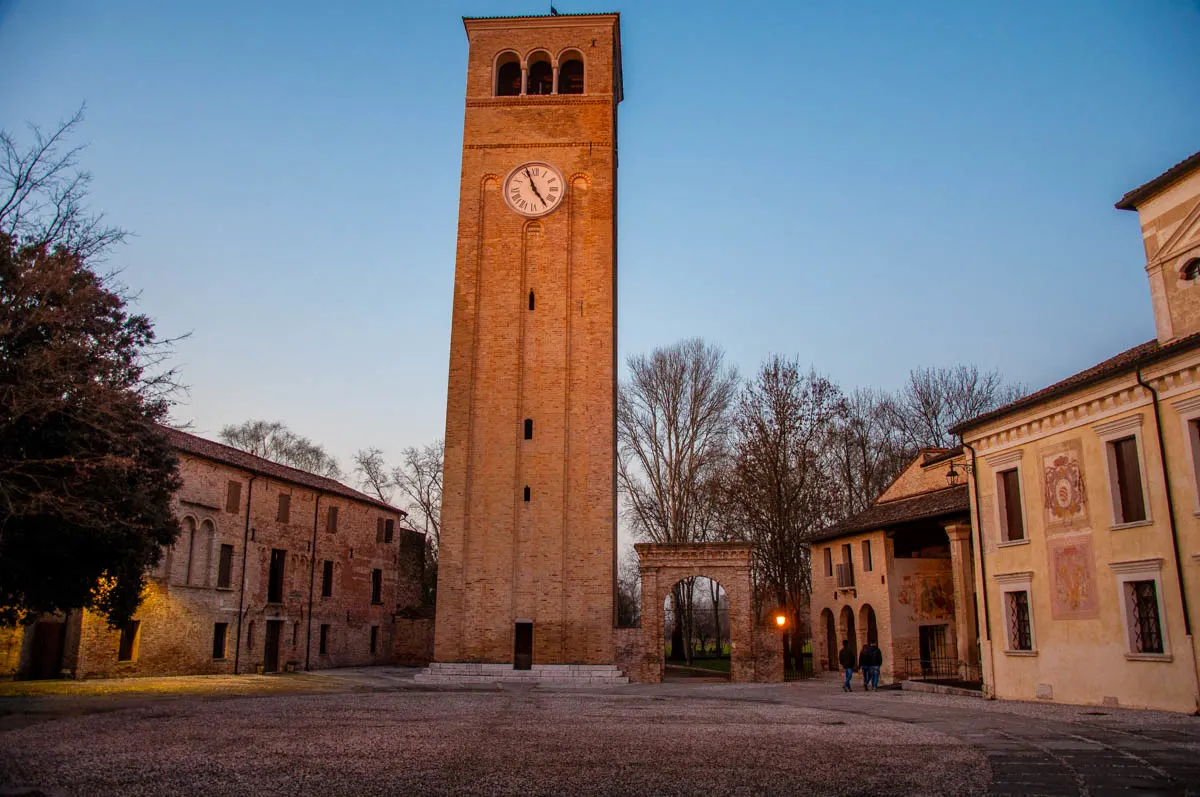
The Abbey of Santa Maria in Silvis is the fortified Romanesque nucleus around which Sesto al Reghena has evolved through the centuries. A settlement had existed there since pre-Roman times. The village owes its name to the fact that it was positioned exactly at the sixth milestone from the important Roman colony Iulia Concordia (nowadays the town of Concordia Sagittaria in the nearby region of the Veneto).
The abbey was founded in 735 by three Lombard brothers and sons of a duke from the nearby town of Cividale. They left secular life behind and willed all their riches and wealth for the construction of a large monastery. The abbey was destroyed during the Magyar raids of the area at the end of the 9th century. It was then rebuilt in the Romanesque style and once again became an important centre of religious life in those lands. The abbey then had a long history with many turning points in it.
Visiting the village of Sesto al Reghena and its abbey is a great way to fill your soul with beauty and to experience Italy in a very authentic way.
What else to see nearby:
Sesto al Reghena is less than 10 mins away by car from Cordovado – another entry on this list of the five most beautiful villages in Friuli Venezia Giulia to visit now. So, you can spend a day splitting your time between the two thus enjoying double the beauty and the history of this corner of Italy.
You can also combine a visit to Sesto al Reghena with the provincial capital of Pordenone (under 25 mins away). This is one of the larger cities in the region of Friuli Venezia Giulia and it is also famous as the birthplace of the High Renaissance painter Giovanni Antonio de’ Sacchis who is known as Il Pordenone after his hometown. Pordenone has a pretty historic centre which comes truly alive in the early evenings with people enjoying drinks on the outside tables of the many bars and cafes surrounded by frescoed buildings. Pordenone’s Civic Art Museum and Duomo di San Marco deserve a visit.
Sesto al Reghena is just under an hour away from the art city of Udine and 1 h 15 mins away from Friuli Venezia Giulia’s capital – the city of Triest.
Alternatively, Sesto al Reghena can be easily visited from some of the major cities in the neighbouring region of the Veneto for it stands around 50 mins away from Treviso and Venice and between 1 h 10 mins and 1 h 20 mins away from Padua and Vicenza.
Venzone, Province of Udine
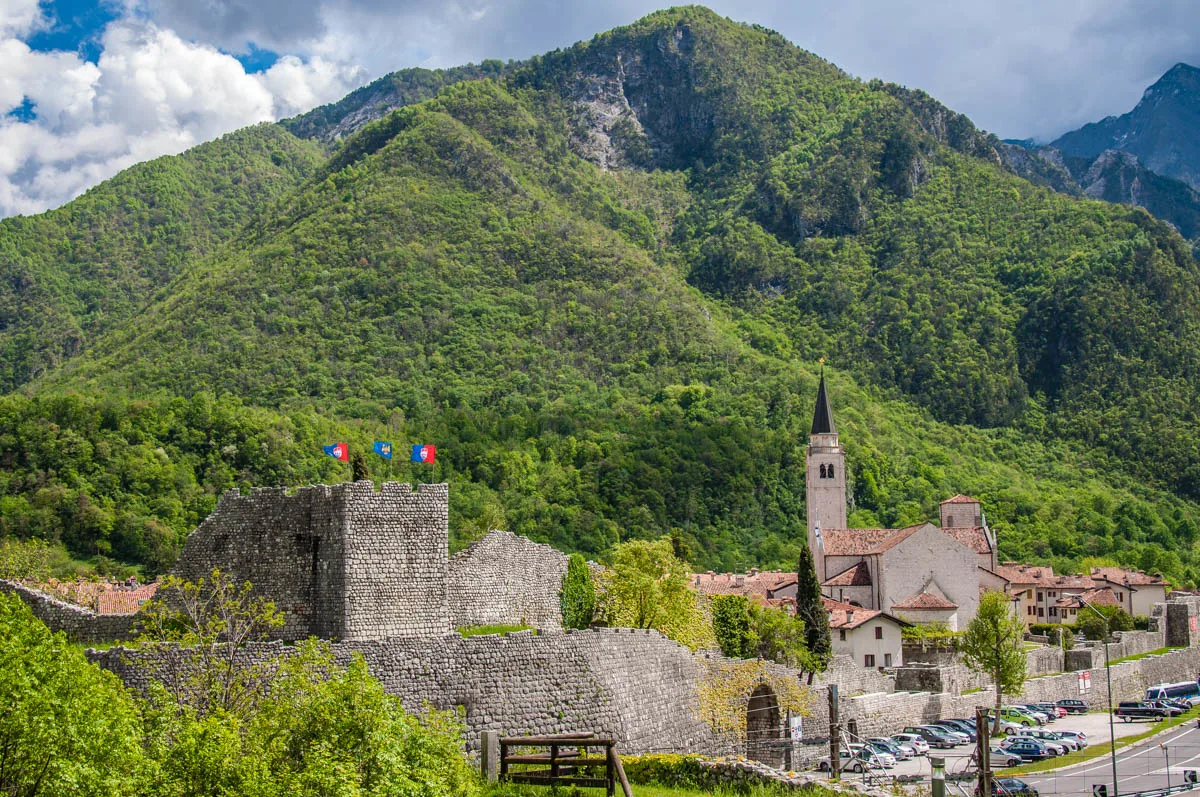
Venzone is beautiful and it knows it. This once Roman castrum and then Venetian border town nowadays is a picturesque village surrounded by a thick defensive wall. Venzone is dotted with beautiful buildings and its history is marked by many dramatic events including a devastating earthquake a few decades ago.
Attracting tourists from near and far, Venzone is nevertheless a peaceful place to explore on foot while fully enjoying the authentic sensation of getting to know the real Italy first hand.

Finding Venzone happened, as all good things, by complete chance. We were in the area after a few happy days spent in Salzburg, Austria and we wanted to see Italy’s largest butterfly house in the village of Bordano which is also in Friuli Venezia Giulia.
Driving back from Bordano we chanced upon Venzone and seeing its medieval defensive wall and the sparkling waters of the river Tagliamento that flows nearby, we simply had to stop.
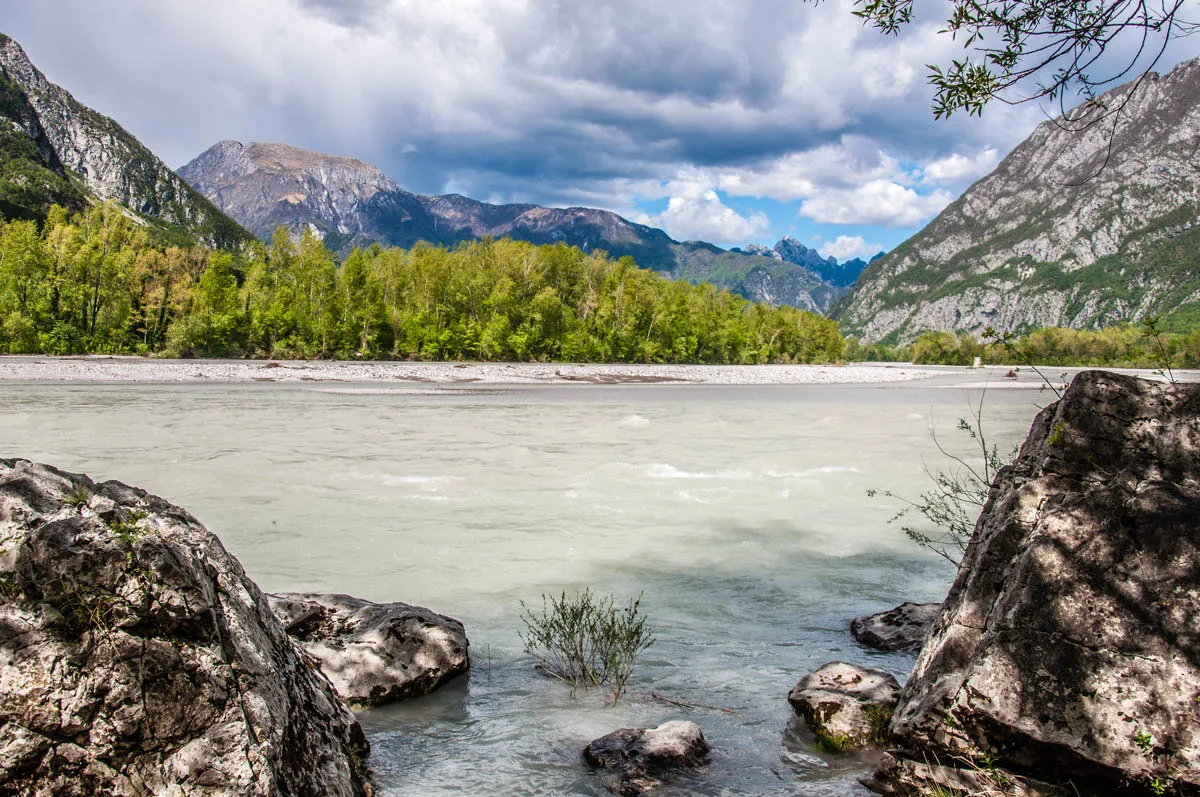
Located on an ancient road that once connected Italy with Europe’s North, a settlement had existed where Venzone stands nowadays since at least Celtic times. The Celts were followed by the Romans and a castrum – a Roman military camp – was erected there to keep an eye on Via Julia Augusta that led from Aquileia and the Adriatic Sea to the centre of modern-day Austria.
For its crucial position, the area of Venzone was much desired and it changed hands many times through the centuries. Visigoths, Byzantines, Lombards, and Carolingians, to mention but a few, left their mark there. Between the 8th and the 10th centuries a town was settled there and its name in 923 was known as Clause de Abintione which through the centuries got corrupted to the present-day Venzone.
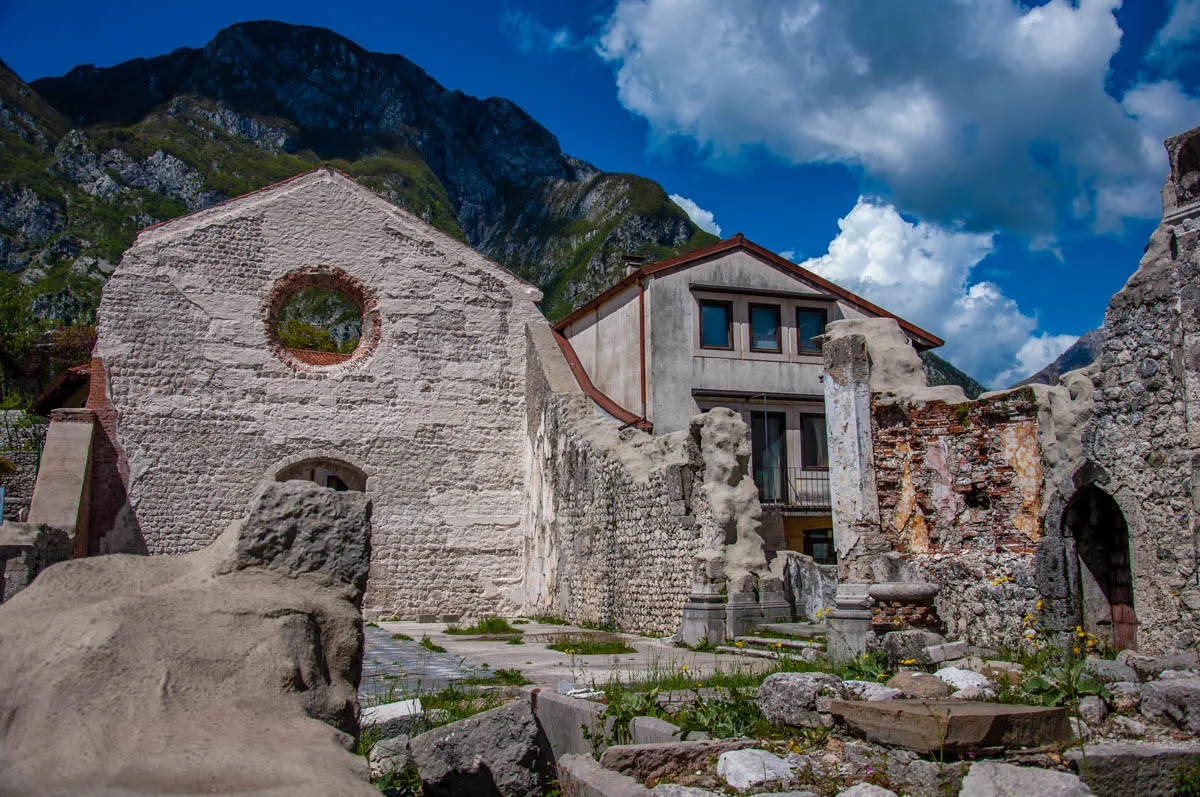
Later on, the Republic of Venice took control of Venzone and this is clearly visible even nowadays as several of the most important buildings in the village are in the Venetian Gothic style.
In 1965, Venzone was declared a National Monument as a unique 15th-century fortified village. Unfortunately, in 1976 a devastating earthquake destroyed a large number of the historic buildings and huge portions of the defensive wall. This was not the end of Venzone though.
A large-scale campaign restored the village with a caring hand and mind over eight years. The attention to detail was such that the original location of the individual stones was carefully identified so that the village could look as much as possible as it did before once the reconstruction was completed.
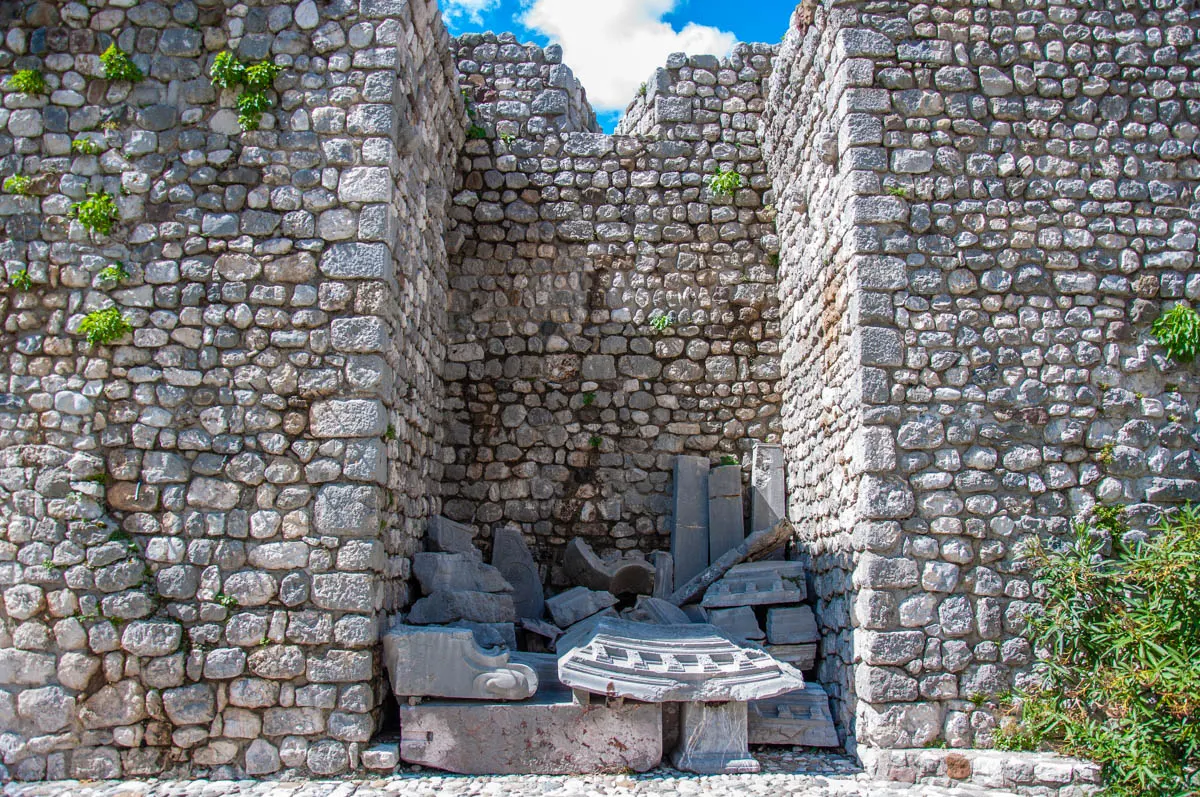
When in Venzone, go for a nice relaxed walk just taking in the beauty and the resilience of this place under the Italian sun. Many buildings will catch your eye. Make sure that you visit the ones that are open to the public. Among them are the Romanesque-Gothic Duomo which has deep scars left by the earthquake, the Town Hall in the Venetian Gothic style, and the museum dedicated to the earthquake of 1976.
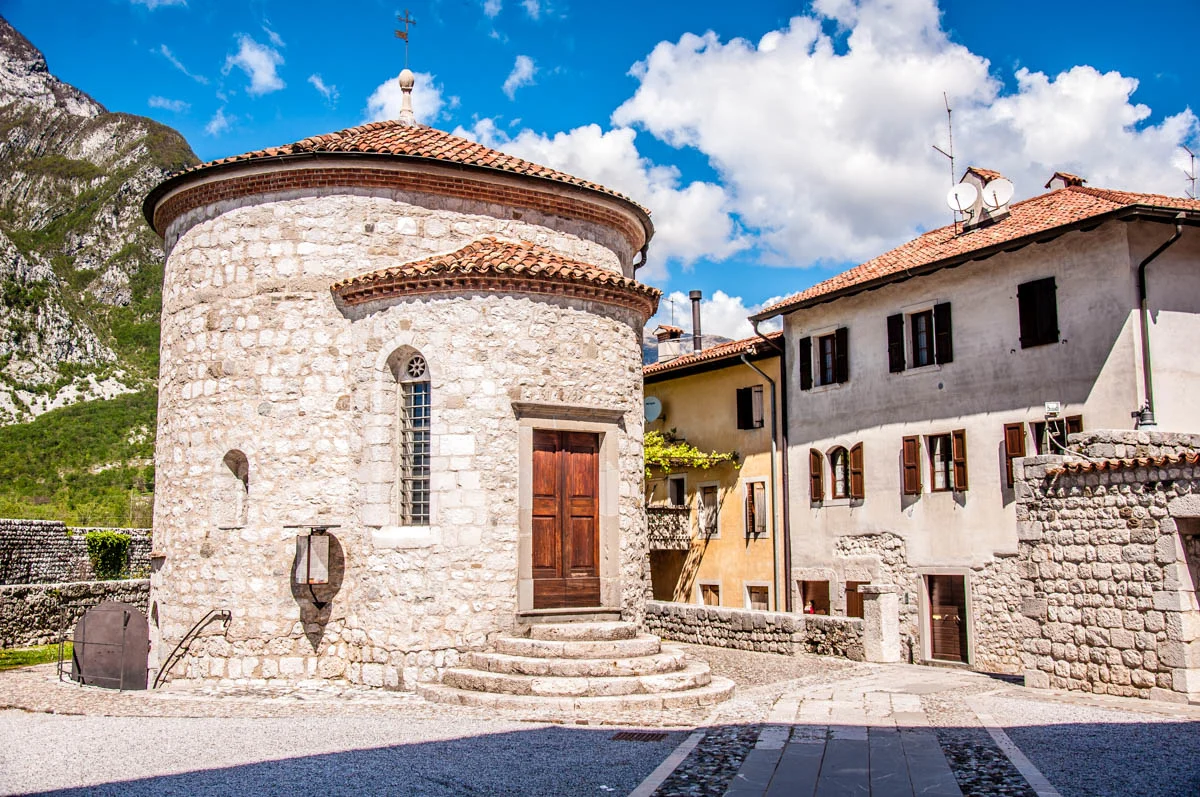
Don’t miss the Cemetery Chapel of St. Michael’s – a circular building in the crypt of which you can see Venzone’s Mummies.
These are the rather creepy bodies of people dating back to from the 14th to the 19th centuries. They were mummified due to a rare parasitic mould that happened to exist in some tombs in Venzone’s Cathedral. The mould would dehydrate the tissues and stop the decomposition of the bodies.
I found the mummies very unsettling so, if you are of a gentle predisposition or very impressionable, please, go into the crypt with someone else rather than by yourself as I did. Also, I personally wouldn’t recommend bringing small kids down there.
Mummies aside, Venzone is a truly charming place.
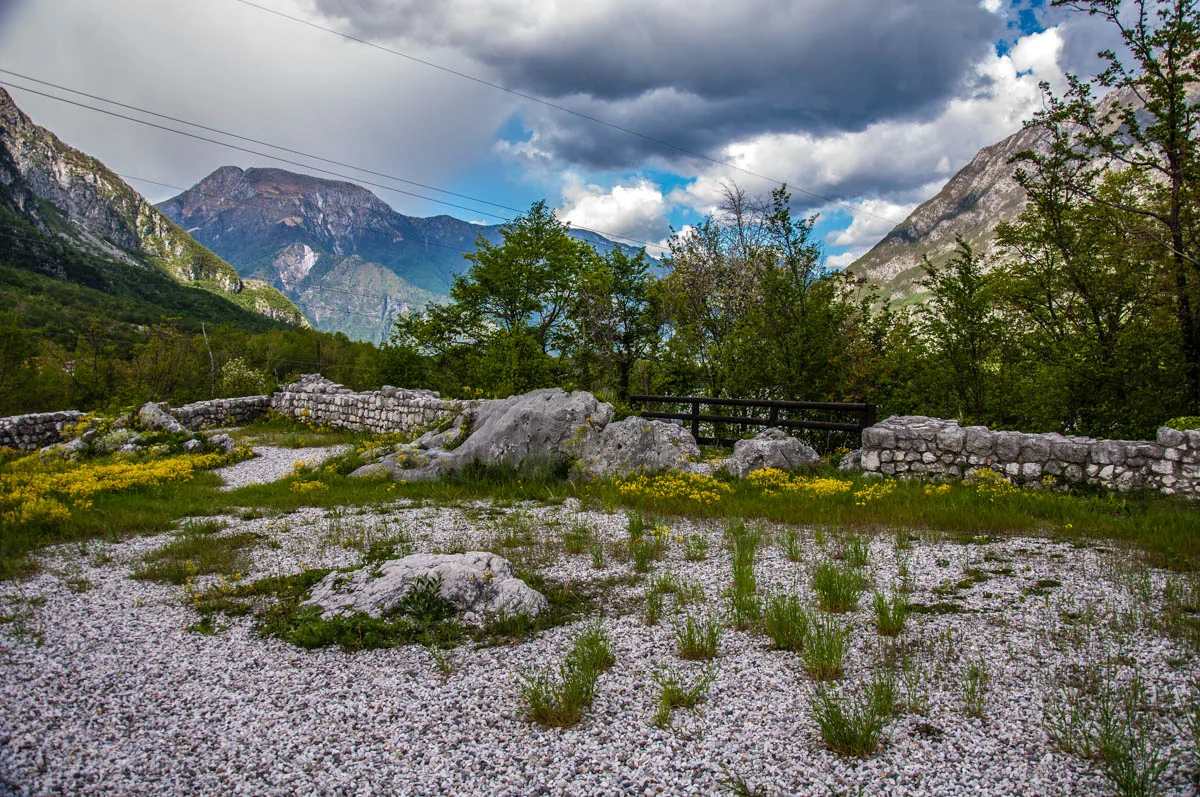
My favourite moment of the day we spent there was when we drove just outside of the village to the ruins of a Venetian fort which is right opposite Venzone. We sat there for a long moment just taking in the panorama – the fortified village surrounded by its centuries-old wall and the green mountains behind it that looked like made of lush green velvet.
An old couple came along and we spoke with them for a bit. They were from Venzone and liked coming to the Venetian ruins for a walk every now and then just to sit down and admire their village and the life that they had built together during the many decades of their marriage.
What else to see nearby:
Venzone is next door to the village of Bordano – home to Italy’s largest butterfly house. It is also around 20 mins away from Lake Cavazzo and approximately 25 mins away from the Transboundary Park in the Julian Prealps where you can hike and get close to nature.
You can also combine a visit to Venzone with the provincial capital of Udine (just over half an hour away). This is one of the major cities in the region of Friuli Venezia Giulia and one of the most interesting yet little-visited art and historic cities in Italy. Don’t miss the Castle of Udine which nowadays is the seat of the city’s historic and art museums. Other must-see sights here are the Archbishop’s Palace with the Diocesan Museum and the Tiepolo Galleries, Casa Cavazzini (seat of the Museum of Modern and Contemporary Art), the Cathedral of Santa Maria Annunziata, as well as the city’s many squares (especially, Piazza Liberta’ with its clock tower that emulates the St. Mark’s Clock Tower in Venice).
Venzone is just over 40 mins away by car from Palmanova – another entry on this list of the five most beautiful villages in Friuli Venezia Giulia to visit now. So, you can spend a day splitting your time between the two thus enjoying double of the beauty and the history of this corner of Italy. In addition, Venzone is just over an hour away from the city of Pordenone and just over 1 h 15 mins away from Friuli Venezia Giulia’s capital – the city of Triest.
Alternatively, Venzone can be easily visited from some of the major cities in the neighbouring region of the Veneto for it stands between 1 h 40 mins and 2 h away from Treviso, Venice, Belluno, and Padua.
More information:
In Conclusion
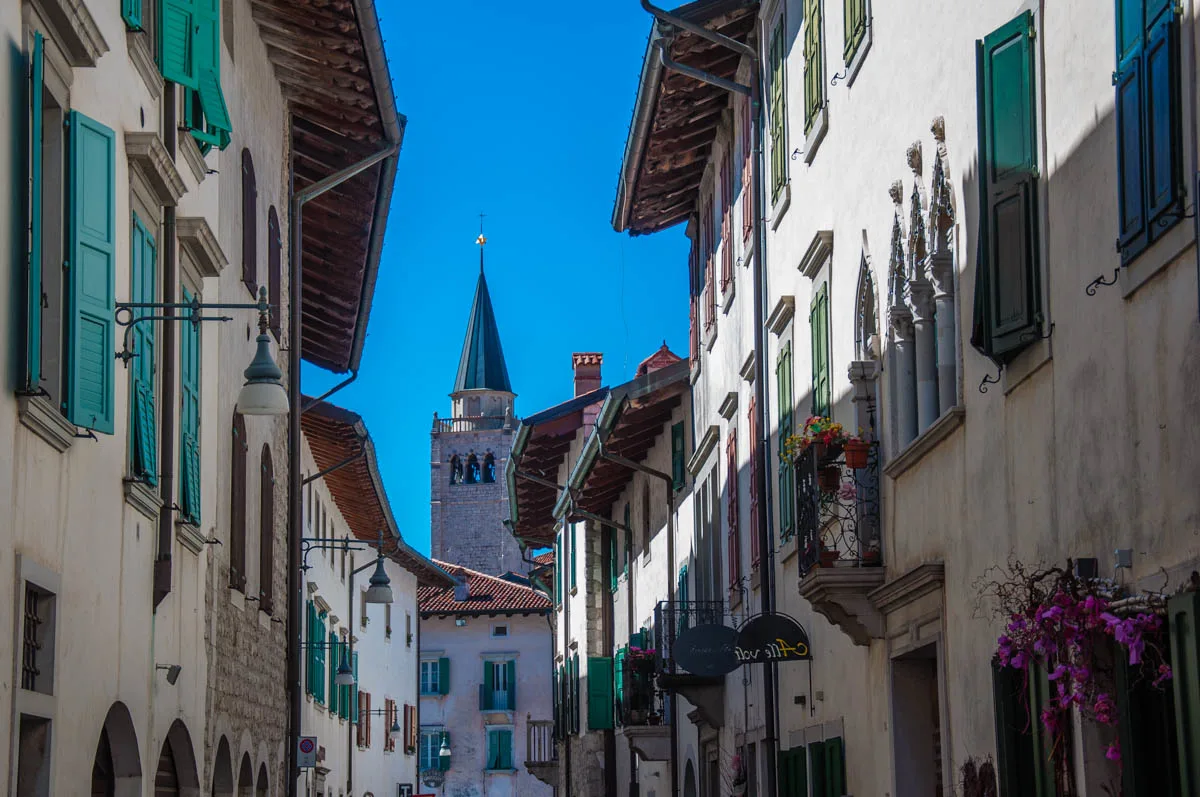
There is no better destination than Italy’s small villages to get to know this very attractive country truly authentically. Preserving centuries-old traditions and surrounded by lush nature, the Italian villages are a delight to discover one by one and thus delve deeper in curious customs and local celebrations.
In the above blog post, I introduce you to the five most beautiful villages in Friuli Venezia Giulia – a little-known by the mass tourist region in Italy. Standing in the northeasternmost corner of the country, here you will find Cordovado, Palmanova, Polcenigo, Sesto al Reghena, and Venzone.
Visiting one or all of them will allow you to discover the art, history, and traditions of this corner of Italy in a truly exciting and memorable way. I have provided extensive details and many photos to ignite your interest and to help you explore these five beautiful villages as fully as possible.
More Links to Help You Discover Italy Authentically
- Italian Villages or 6 Reasons to Visit Italy’s Picturesque and Historic Borghi
- 8 Most Beautiful Villages to Visit in the Veneto, Italy
- 5 Most Beautiful Villages to Visit in Emilia-Romagna, Italy
- The Shortest River in Italy – Visiting the River Aril in the Village of Cassone at Lake Garda
- Top 15 Places to Visit in the Veneto, Italy – The Ultimate Guide
- 30 Days of Adventures in the Veneto, Italy – #30daysofadventures
- Italian Piazzas – 20 Most Beautiful Squares in the Veneto, Northern Italy
- Asolo – The Soul Asylum of Artists and Royals
- Campo di Brenzone – A Great Day Trip to a Medieval Village in the Hills Above Lake Garda
- Parco delle Cascate and Molina – A Great Day Out in the Province of Verona
- The Sunset that Petrarch Enjoyed
- Best 12 Towns to Visit Around Lago di Garda – Italy’s Largest Lake
- Day Trips from Verona – 16 Destinations to Fall in Love With (With Travel Times and Train Tips)
- Day Trips from Padua, Italy – Over 35 Unmissable Destinations in the Veneto, Lombardy, and Emilia-Romagna
- Day Trips from Vicenza, Italy – Over 90 of the Best Destinations
- 11 of the Best Day Trips from Venice (With Lots of Photos, Travel Times and Italy Train Tips)
- Hidden Gems in Venice – 101 Things to Do in Venice Off the Beaten Track
Thank you for reading! Please, leave me a comment, pin the image below or use the buttons right at the top and at the end of this blog post to share it on social media.
For more useful information like this, please, like my blog’s page on Facebook and subscribe to my strictly no-spam newsletter.
